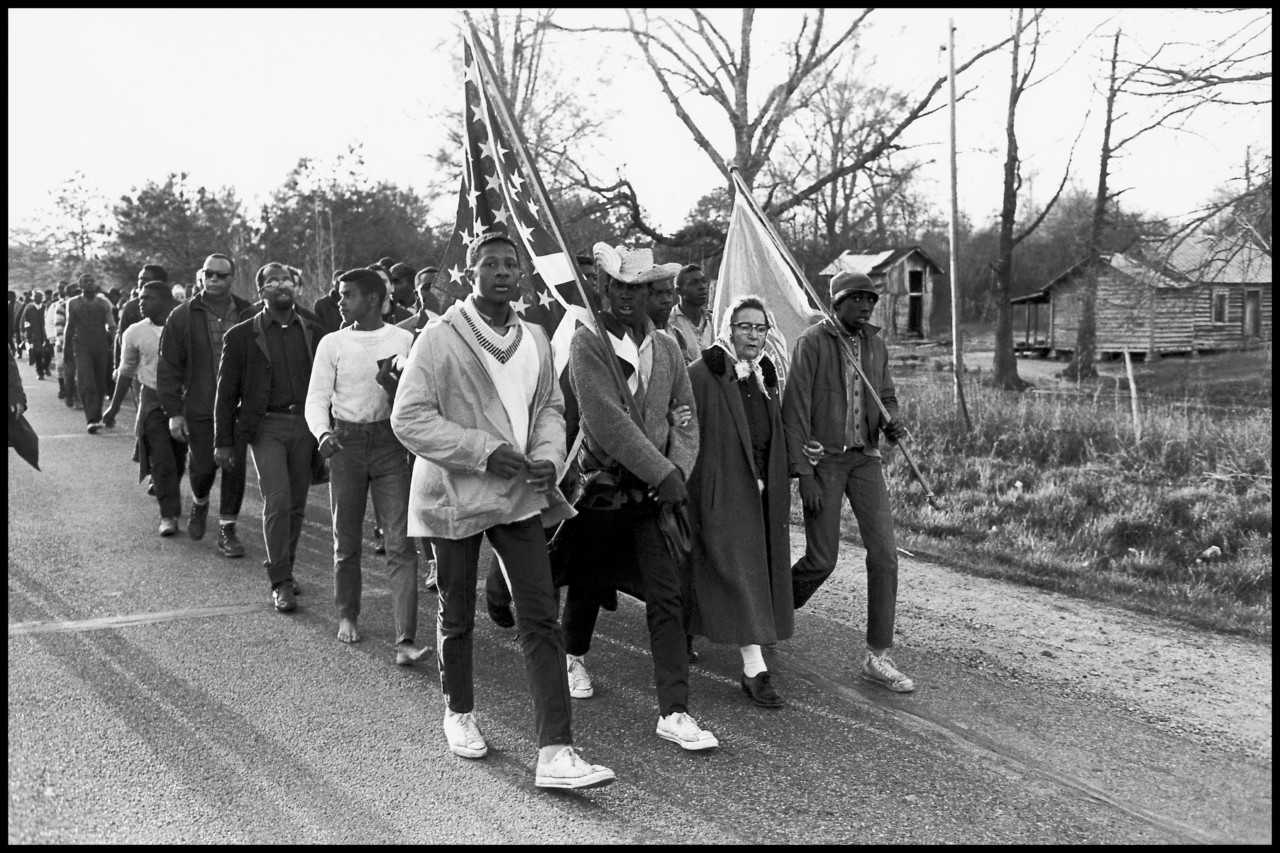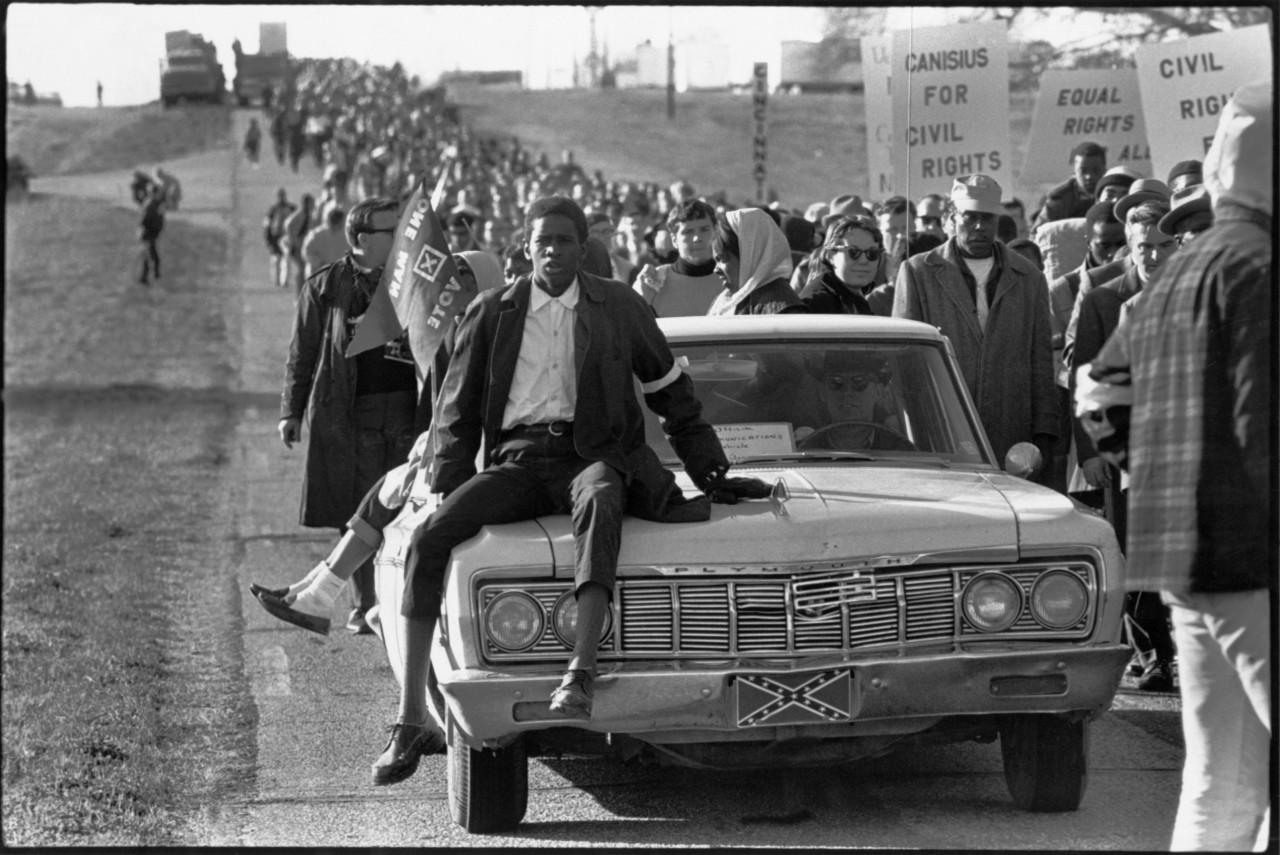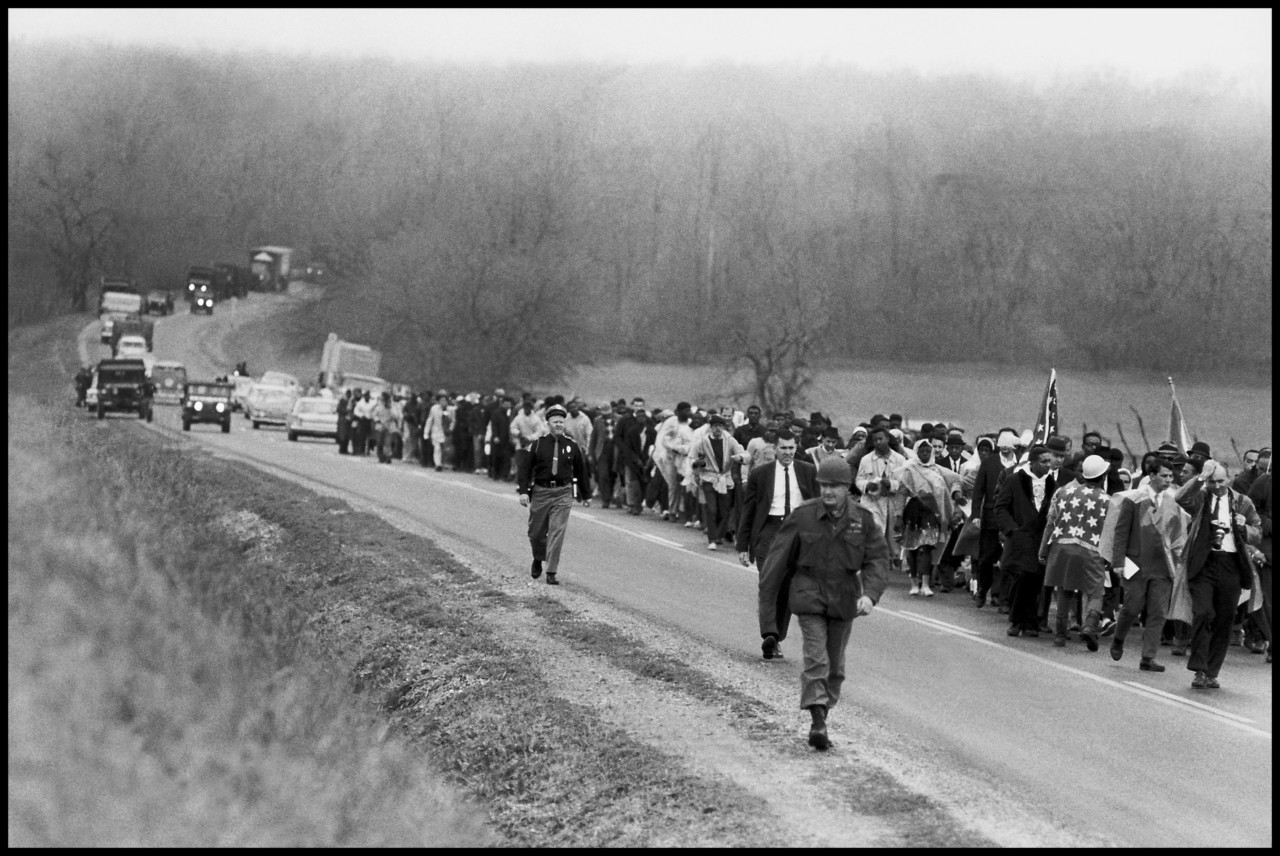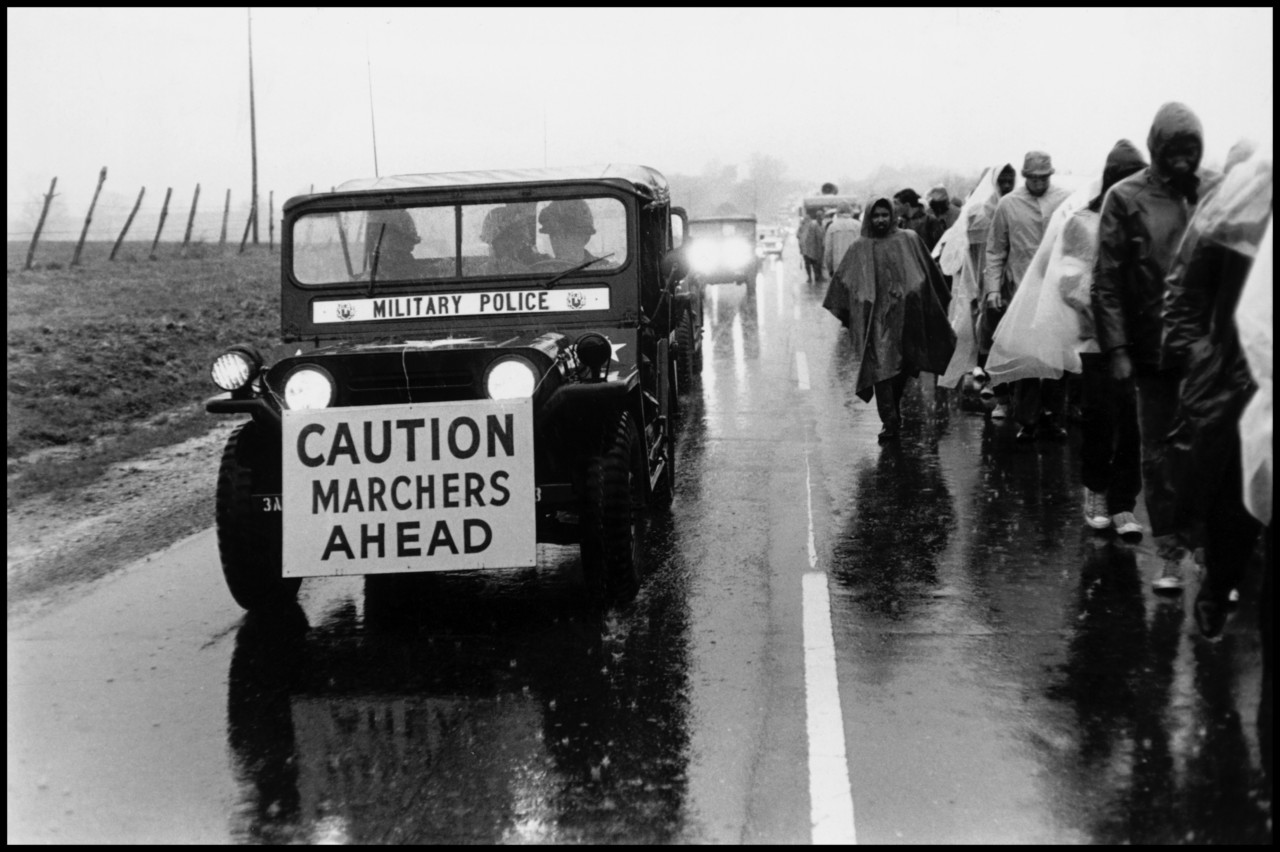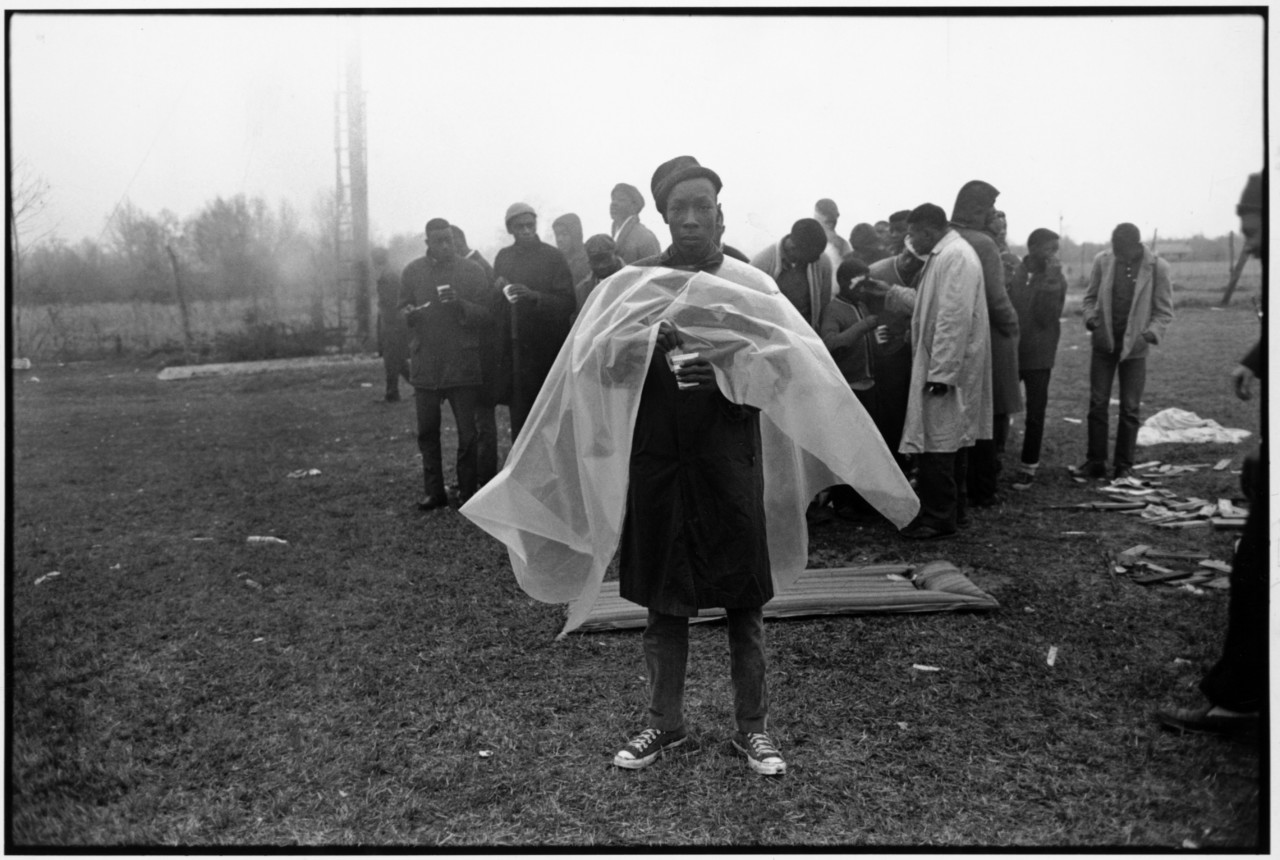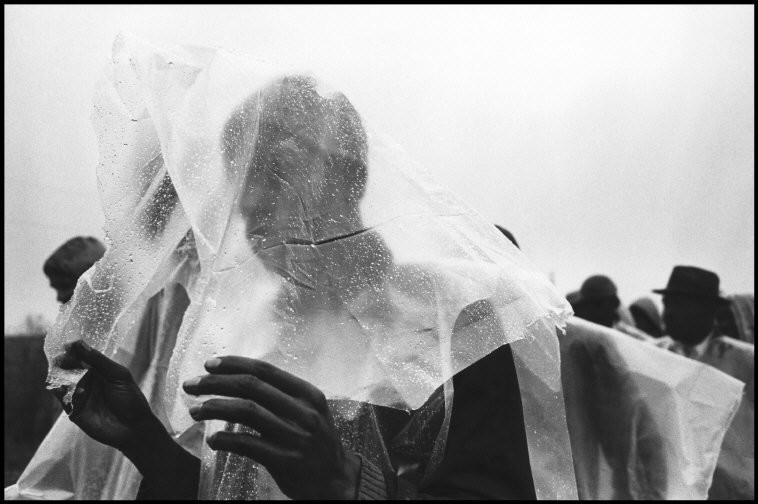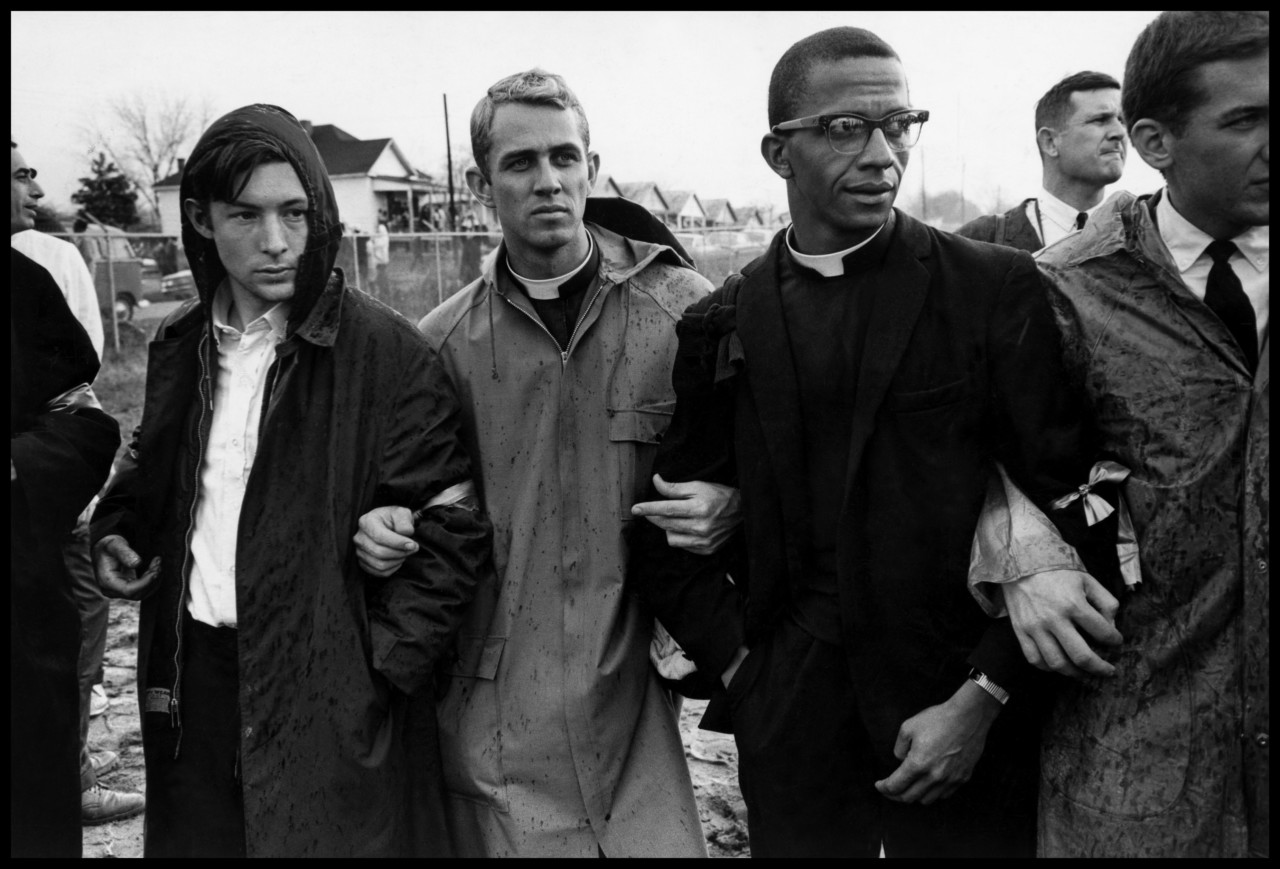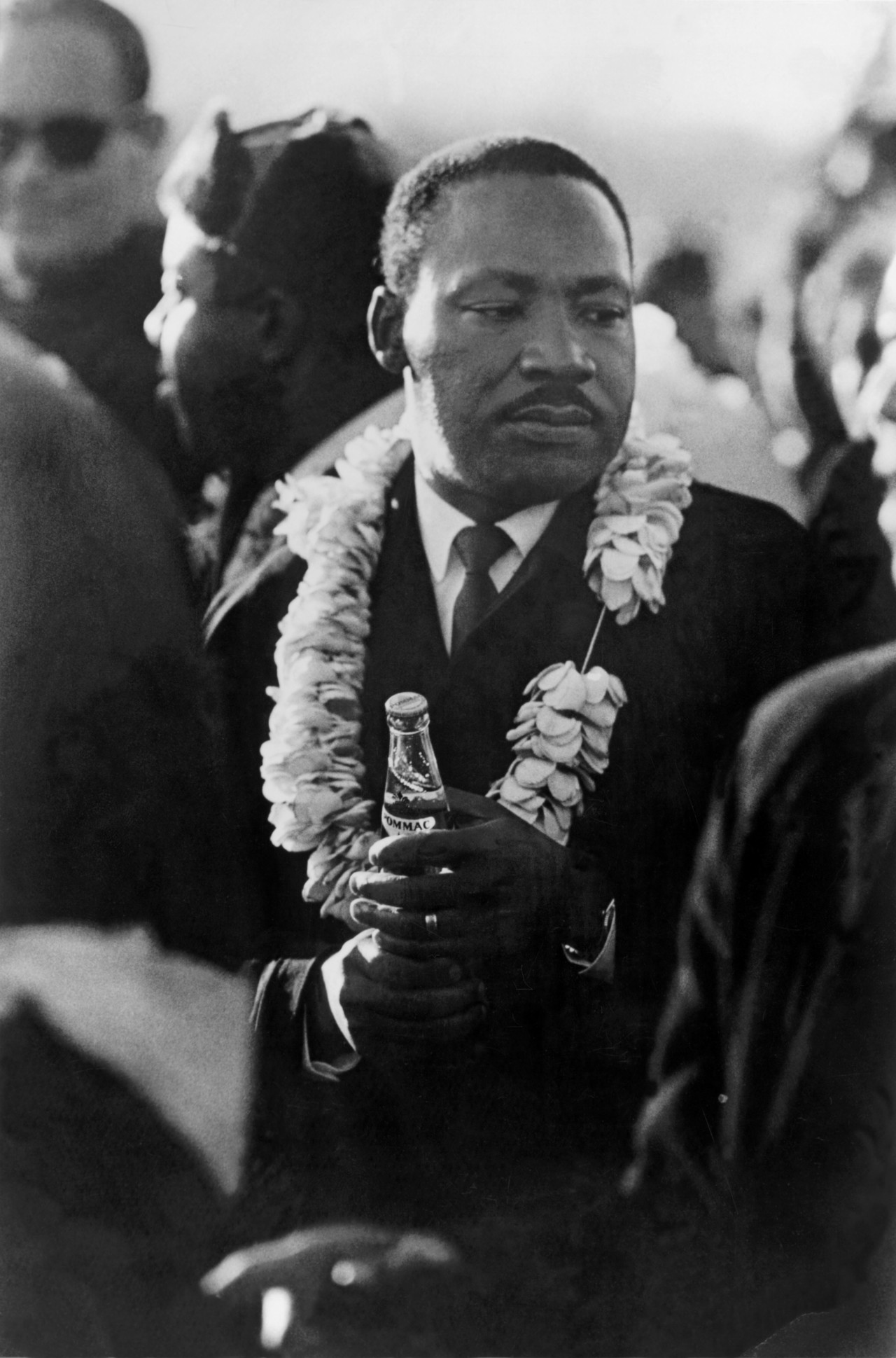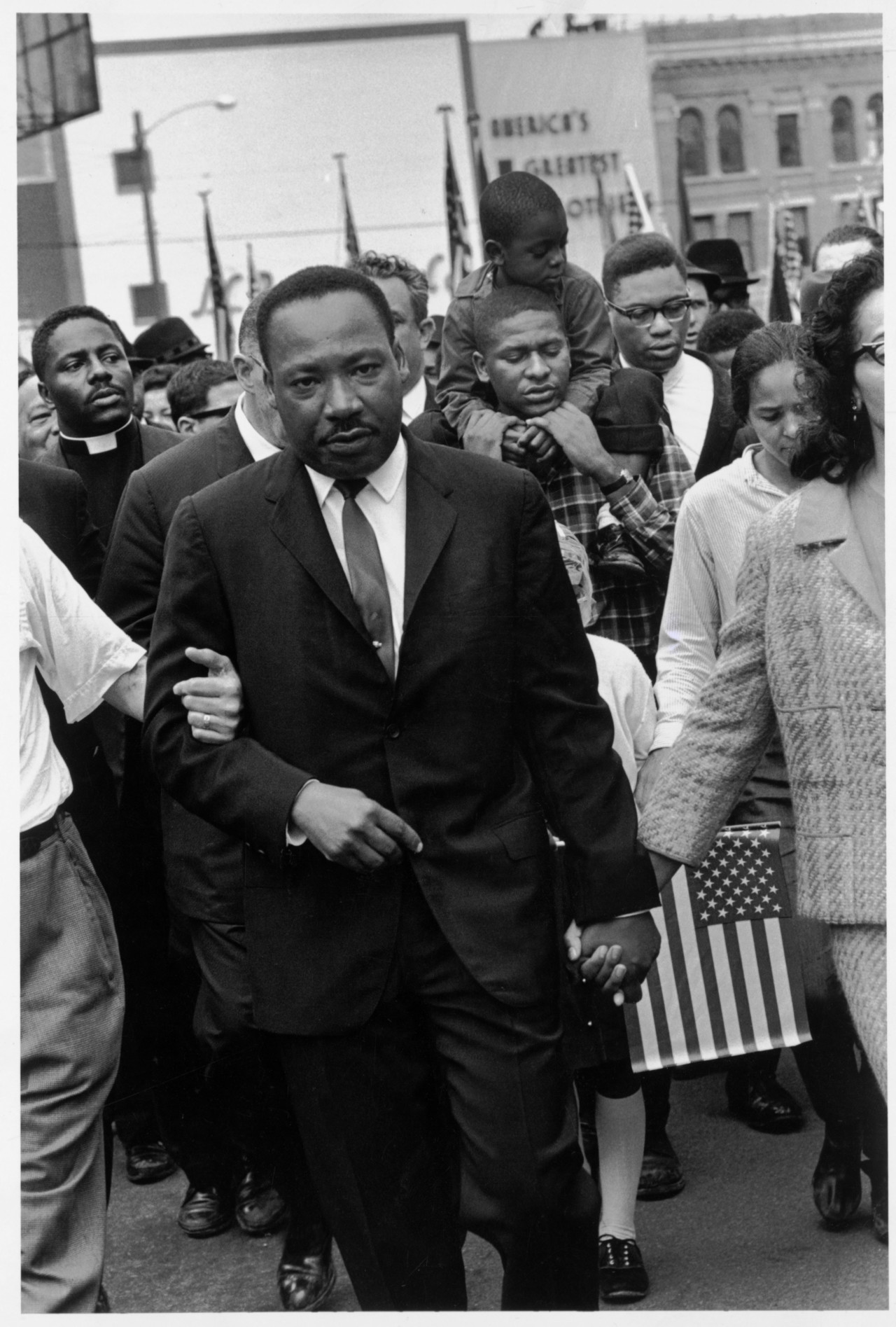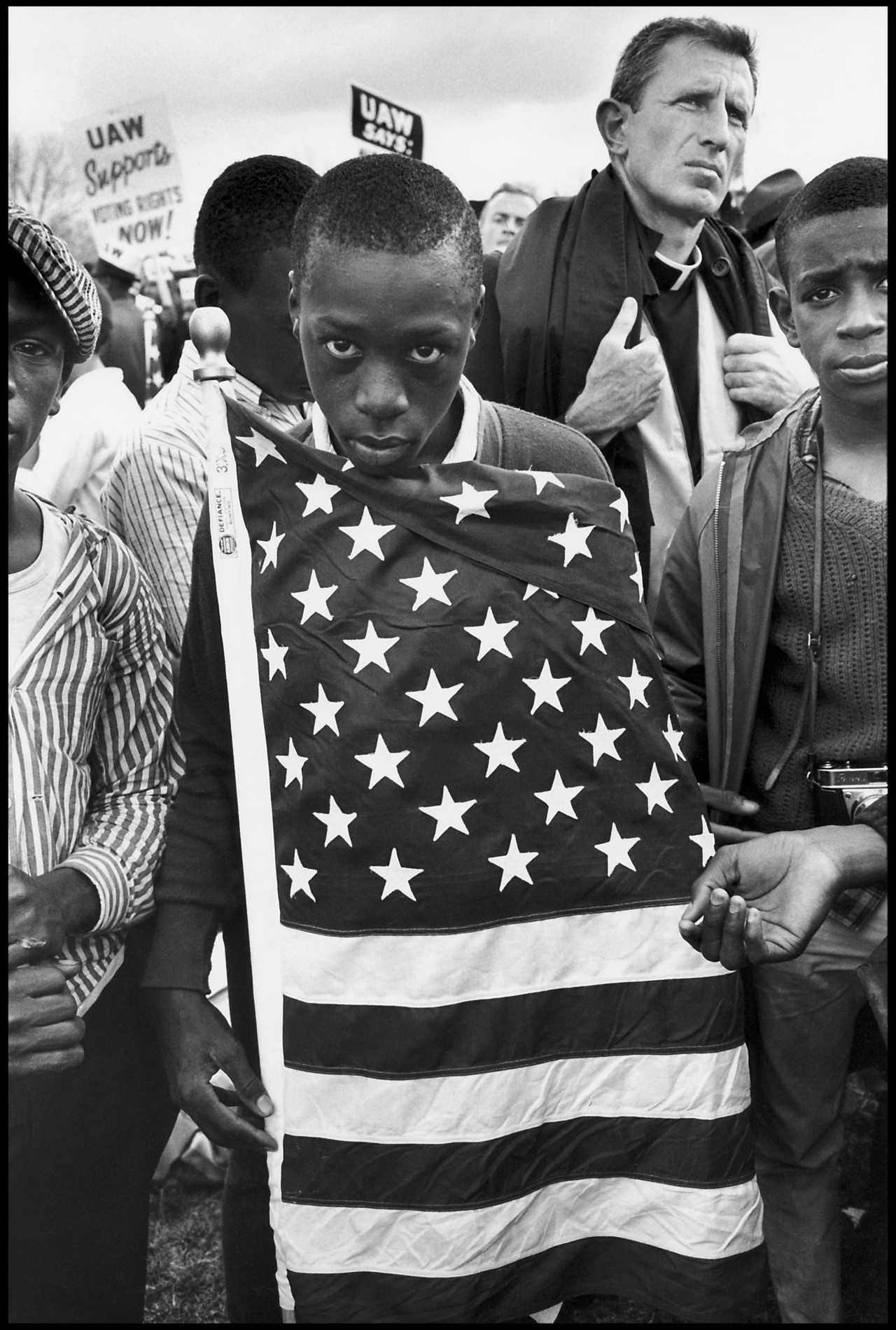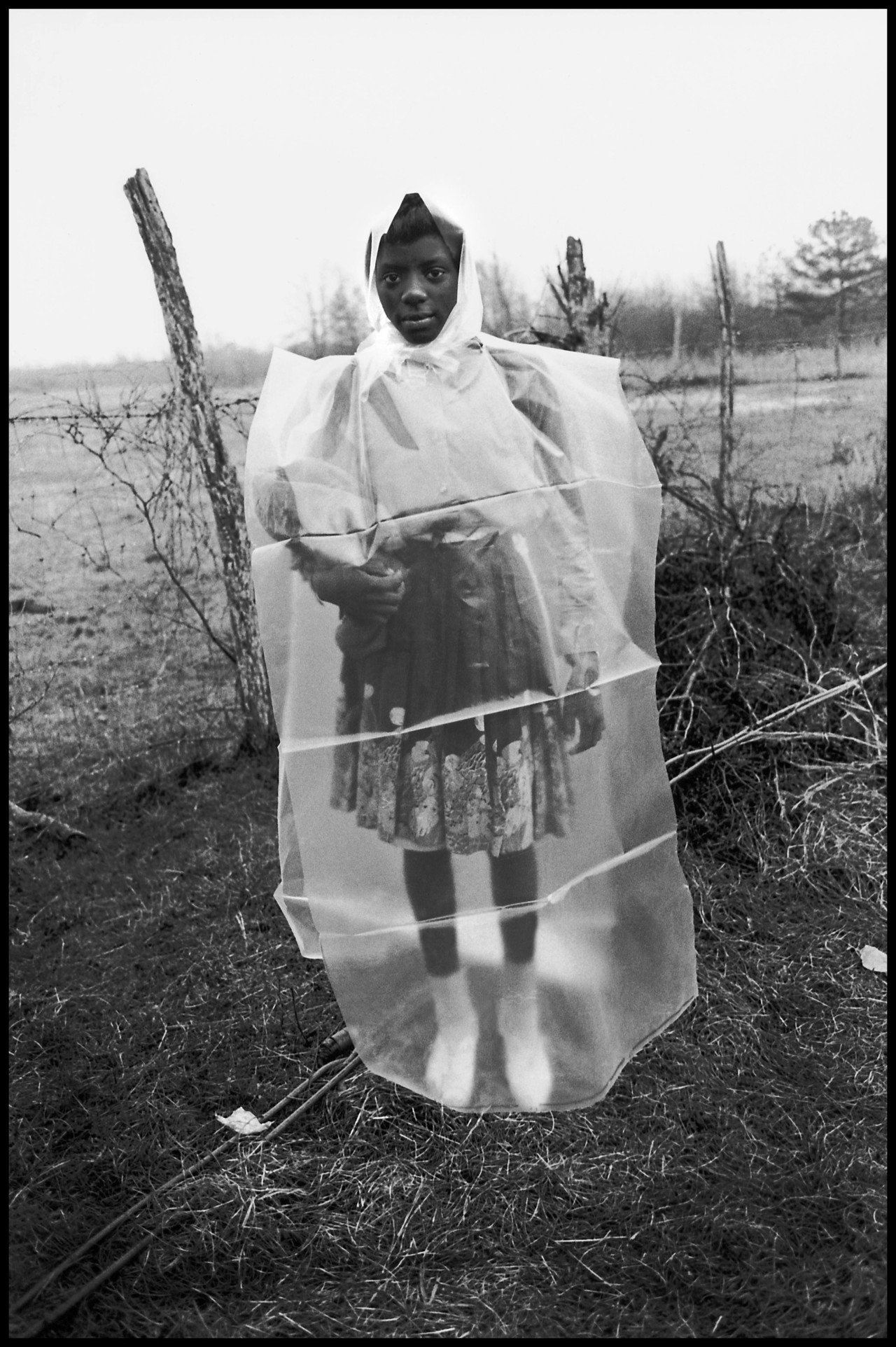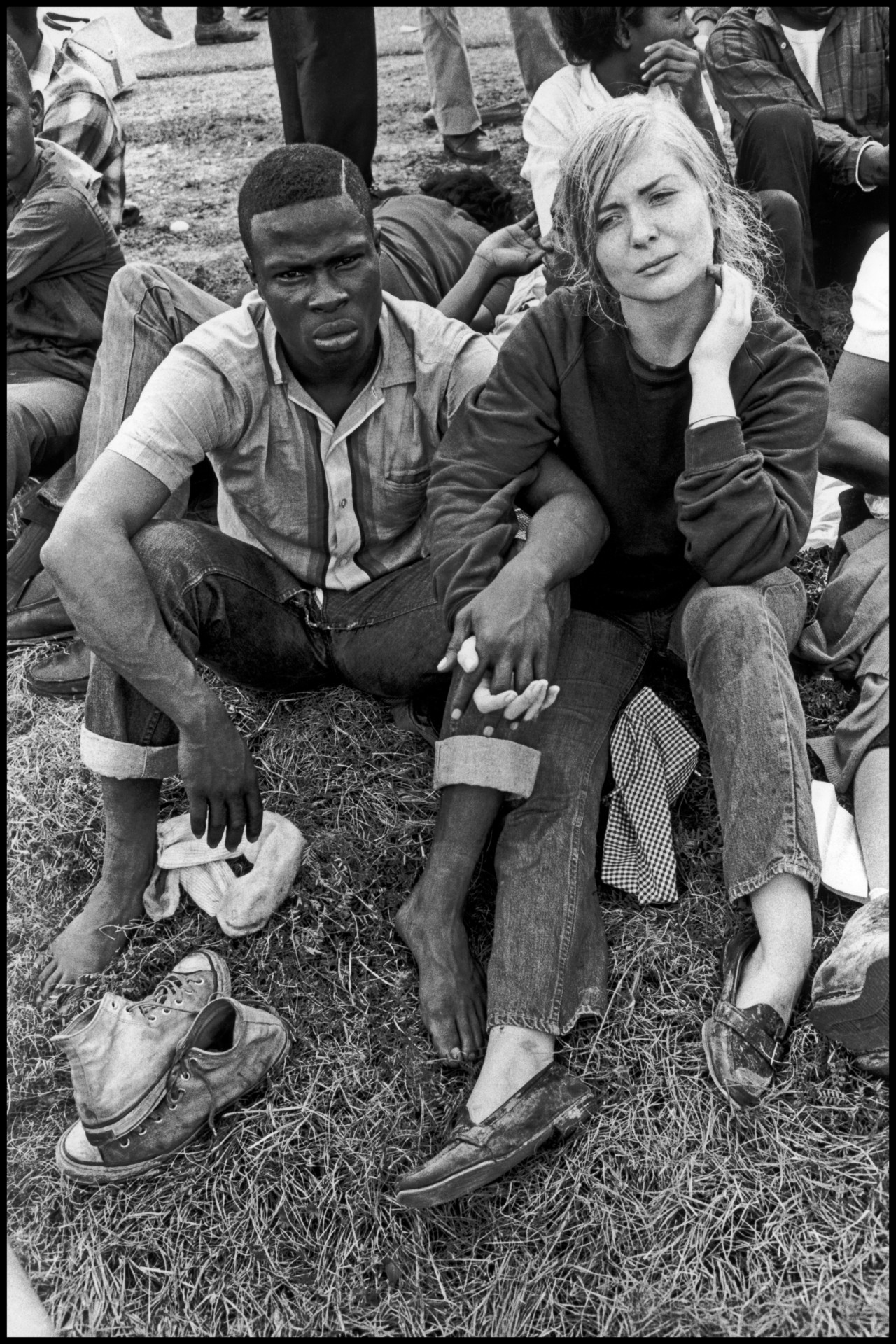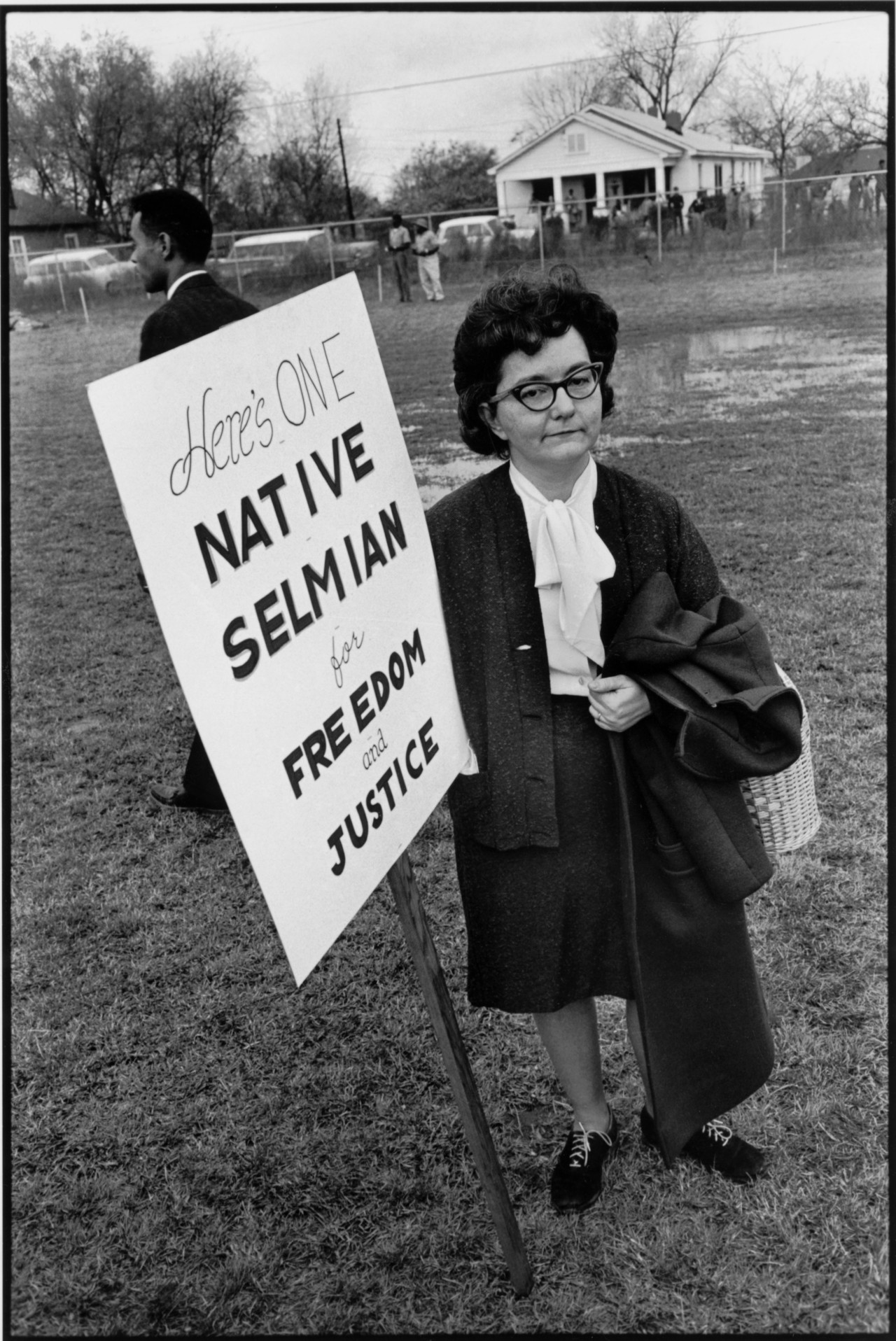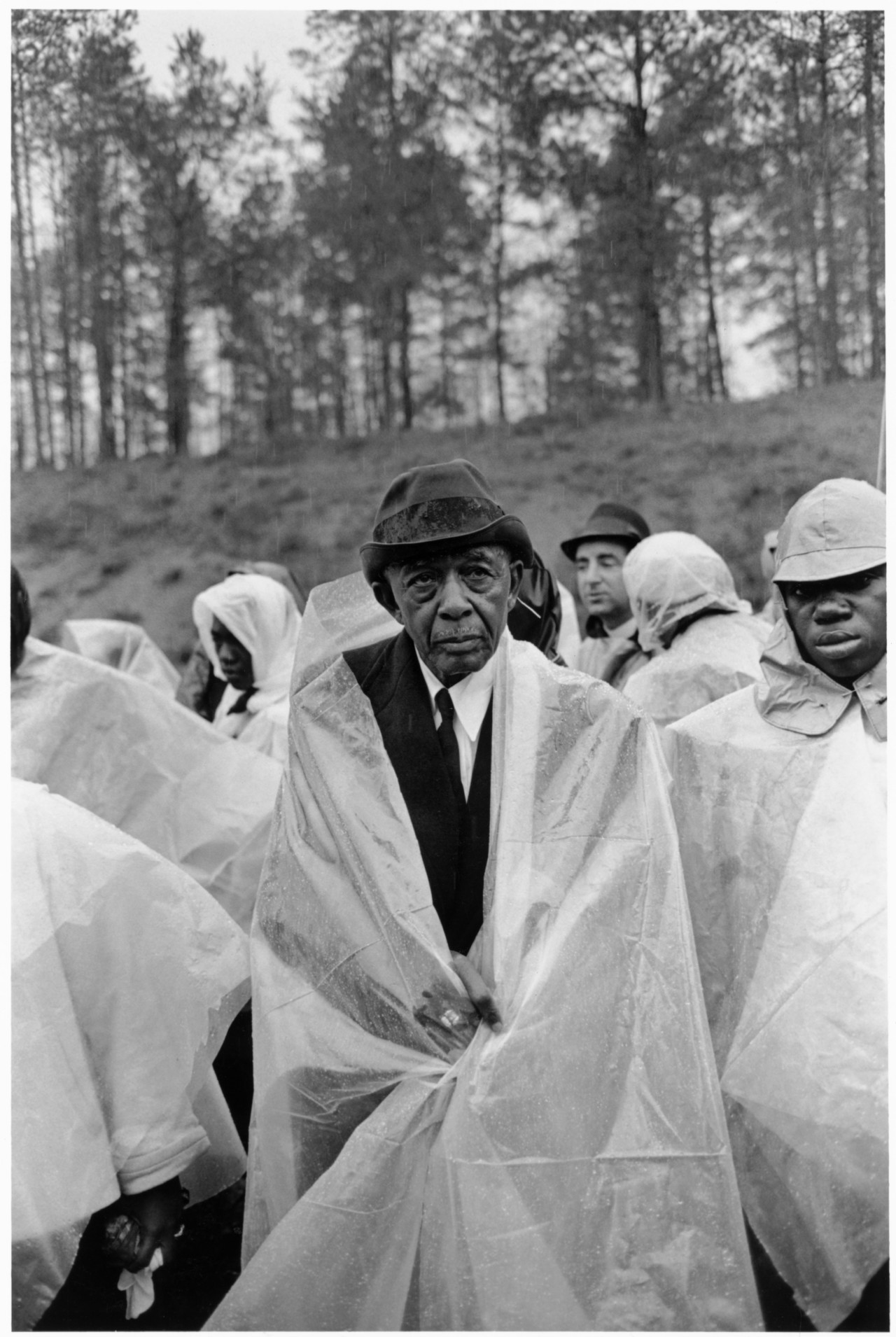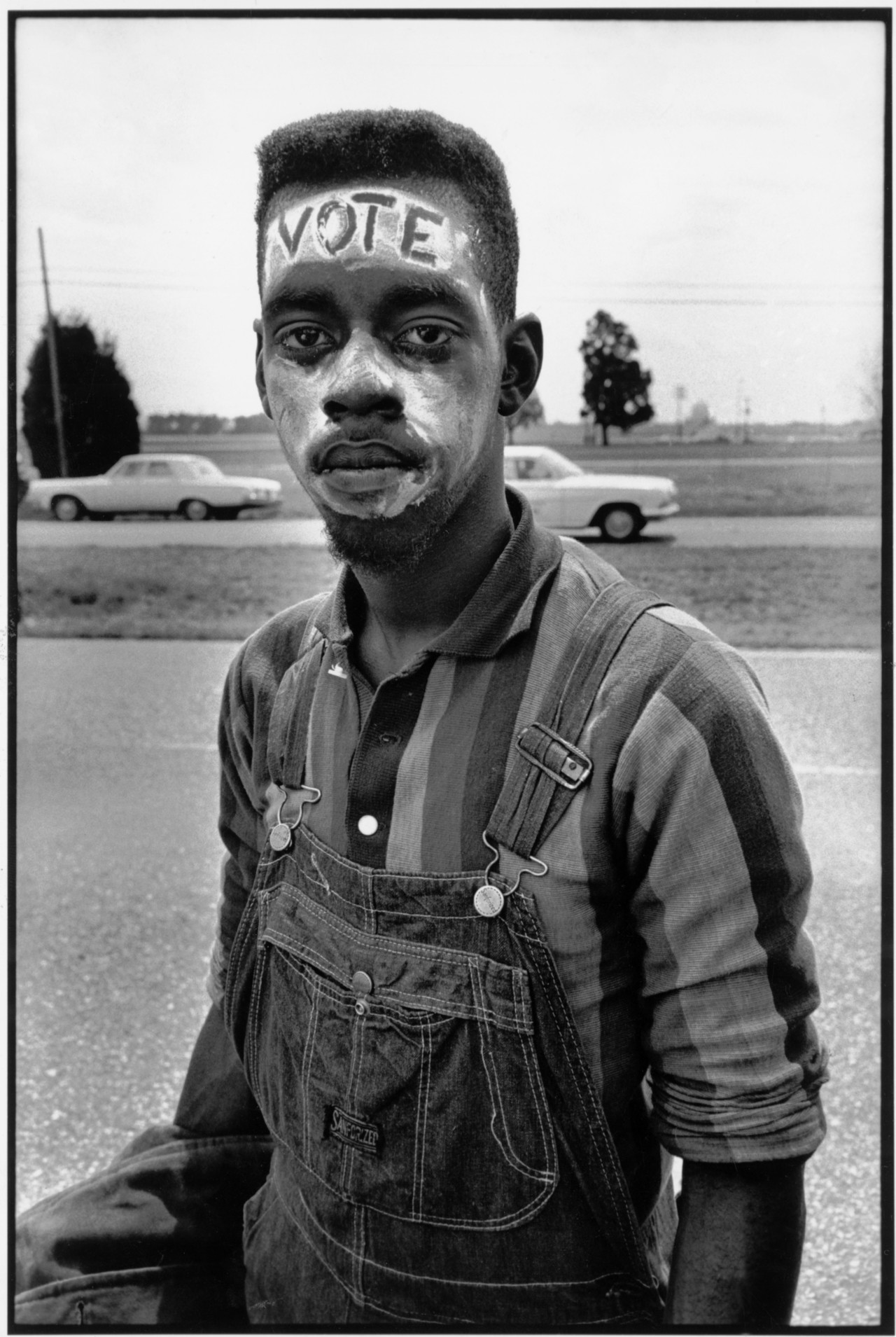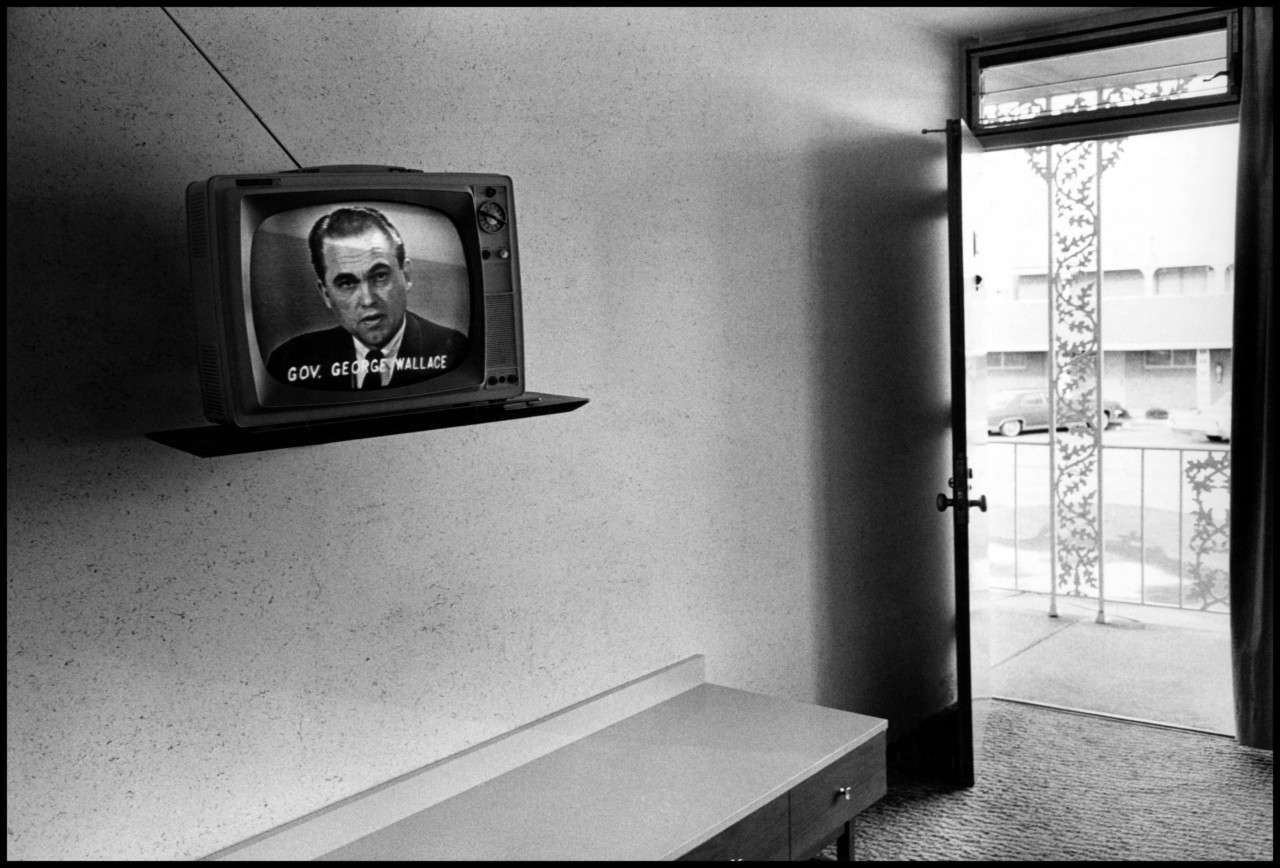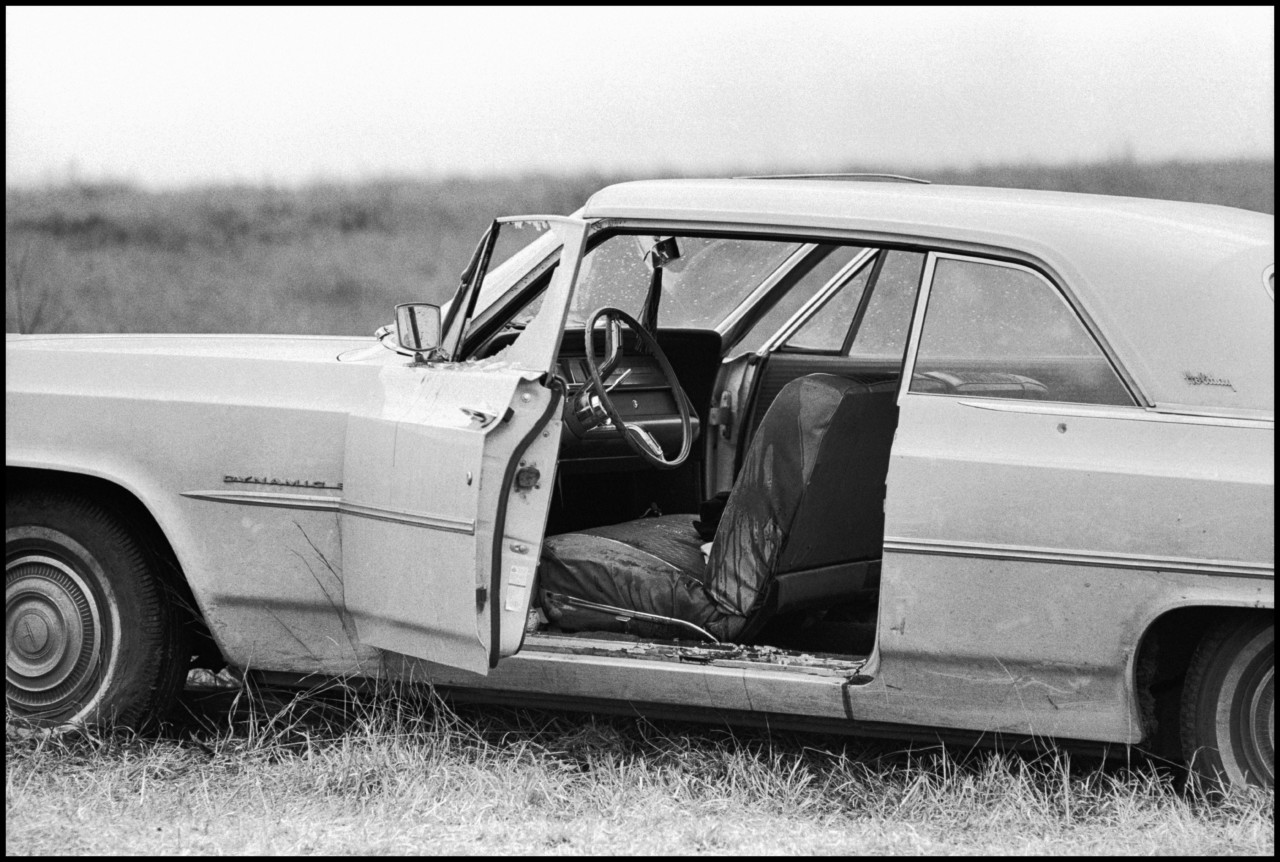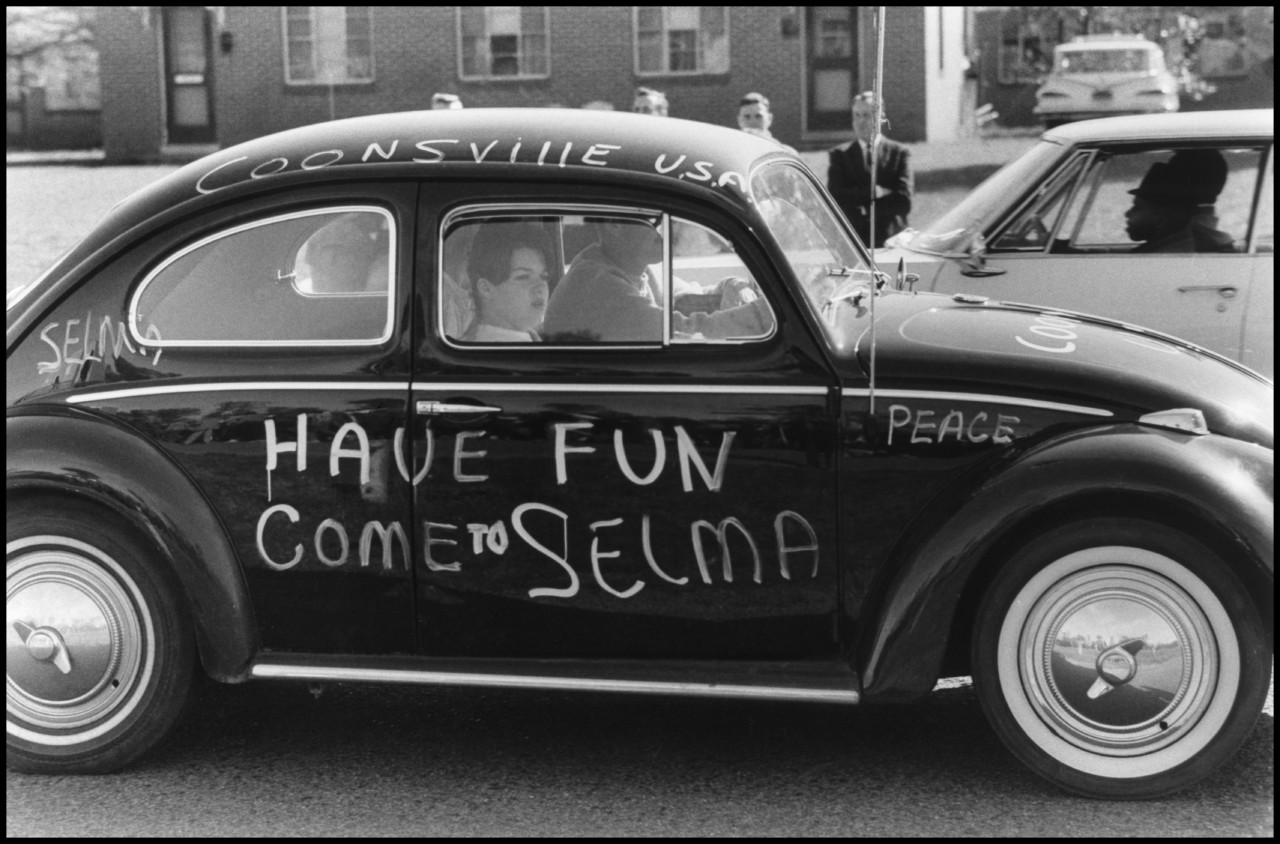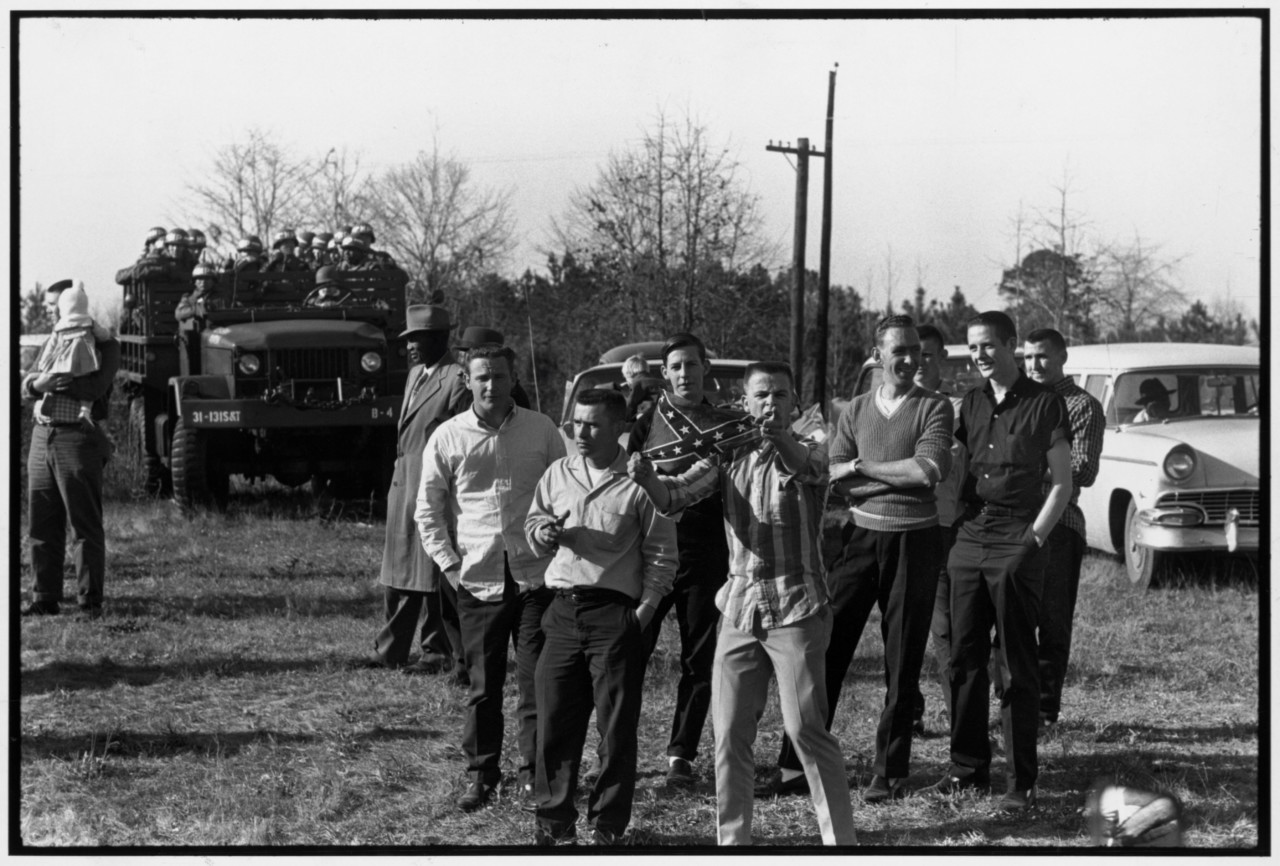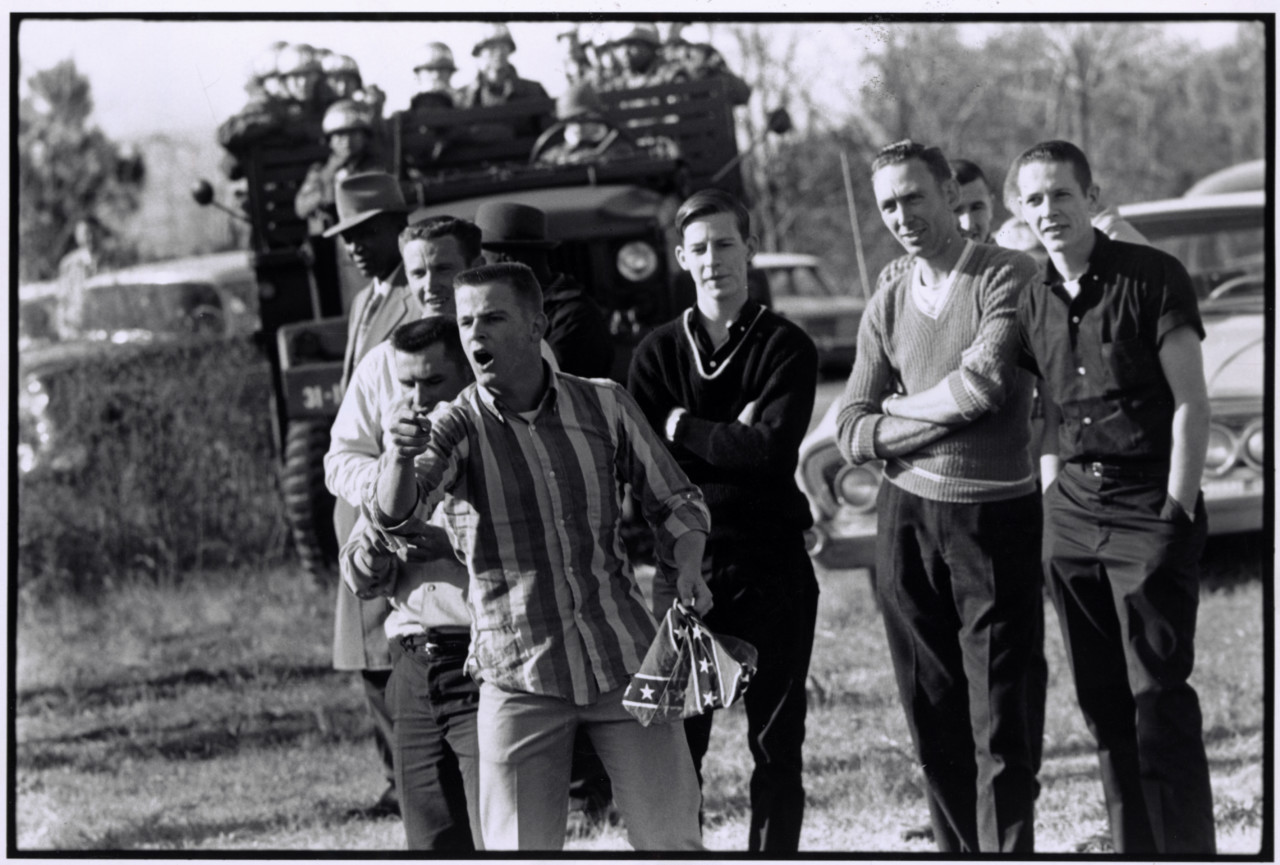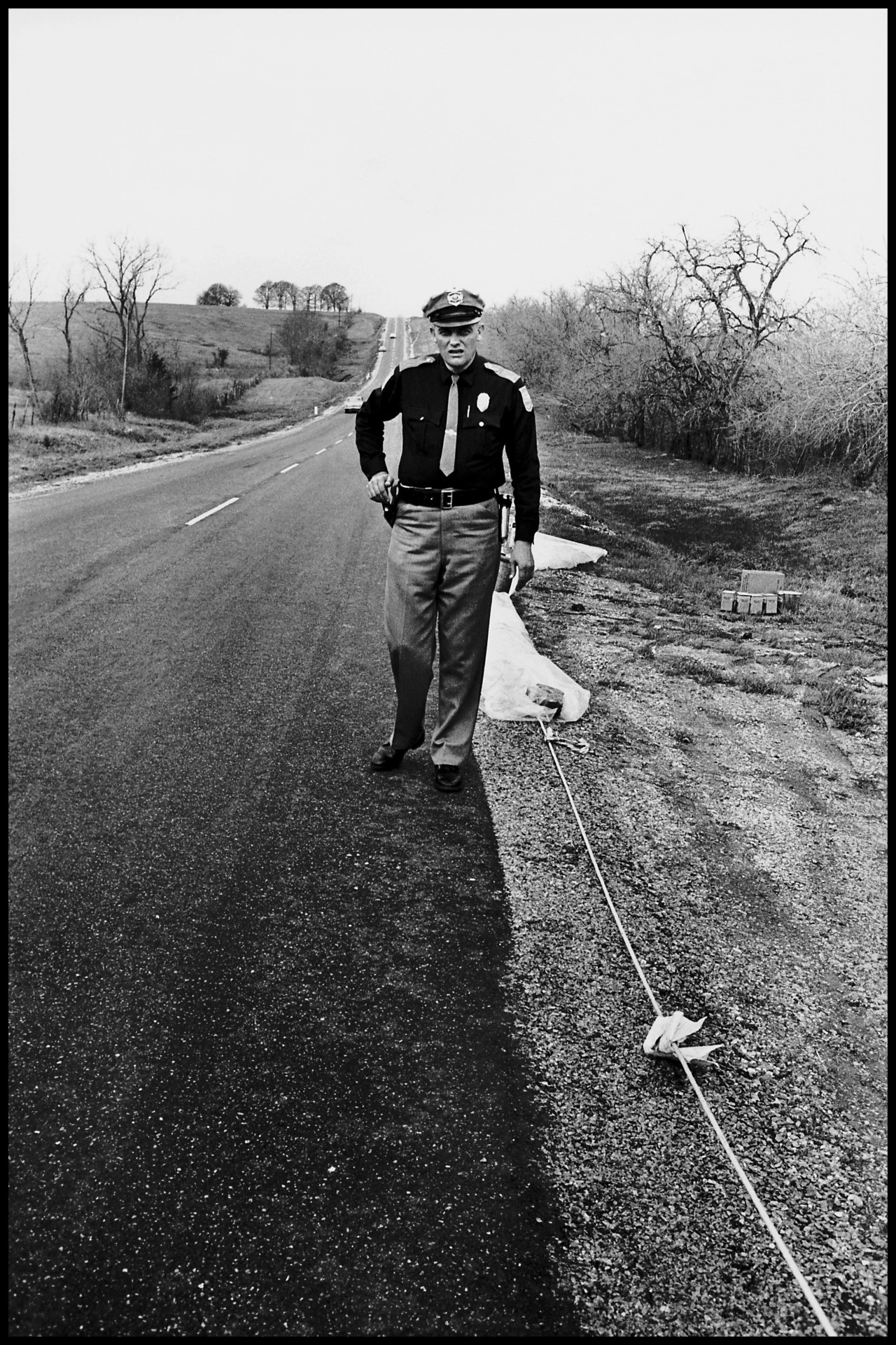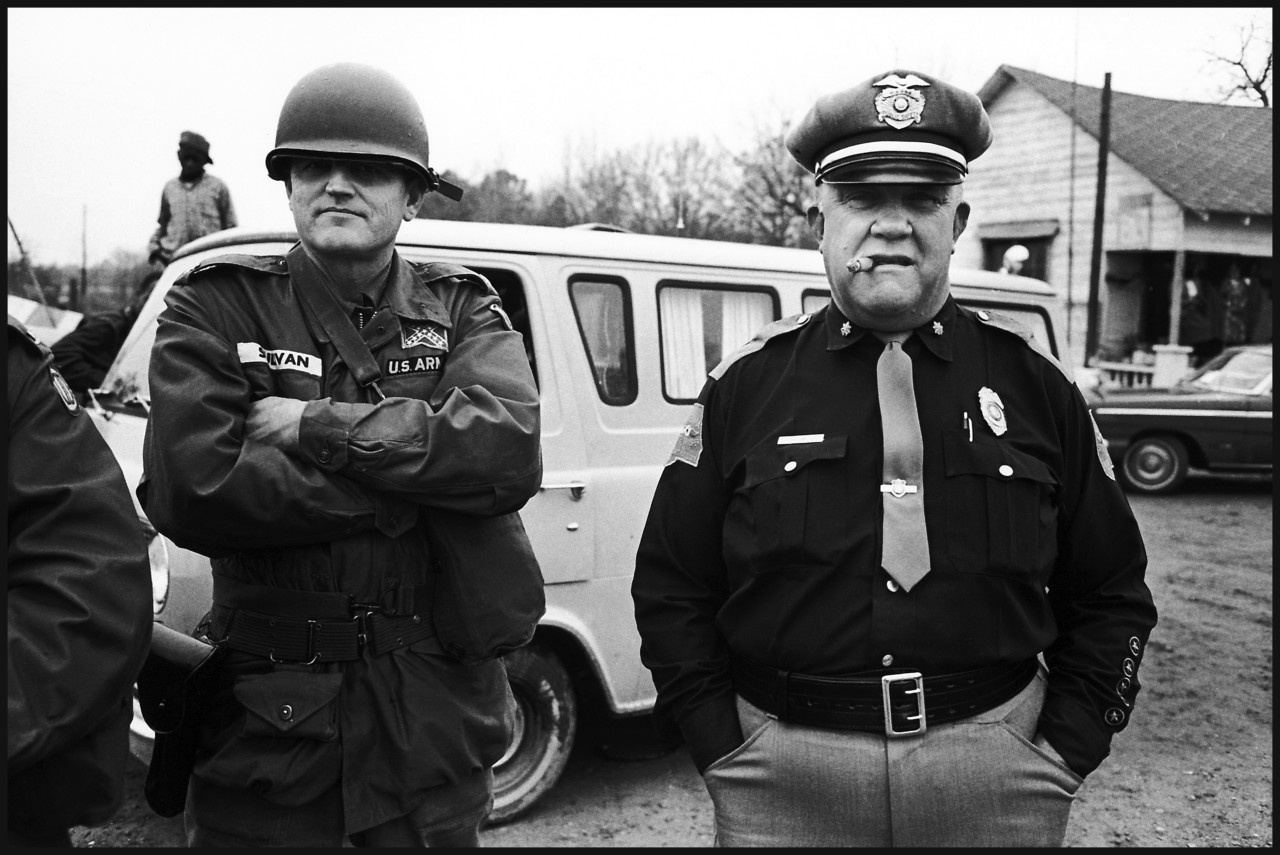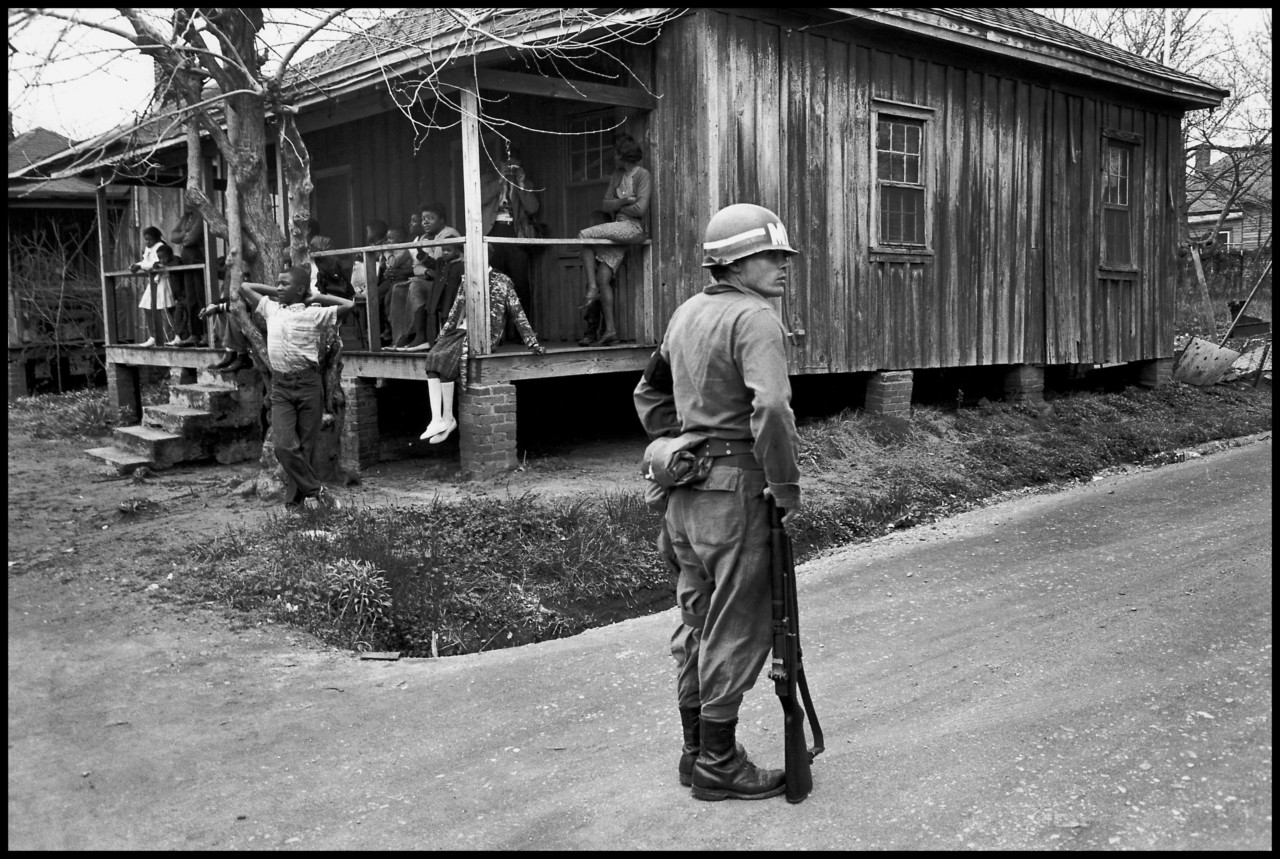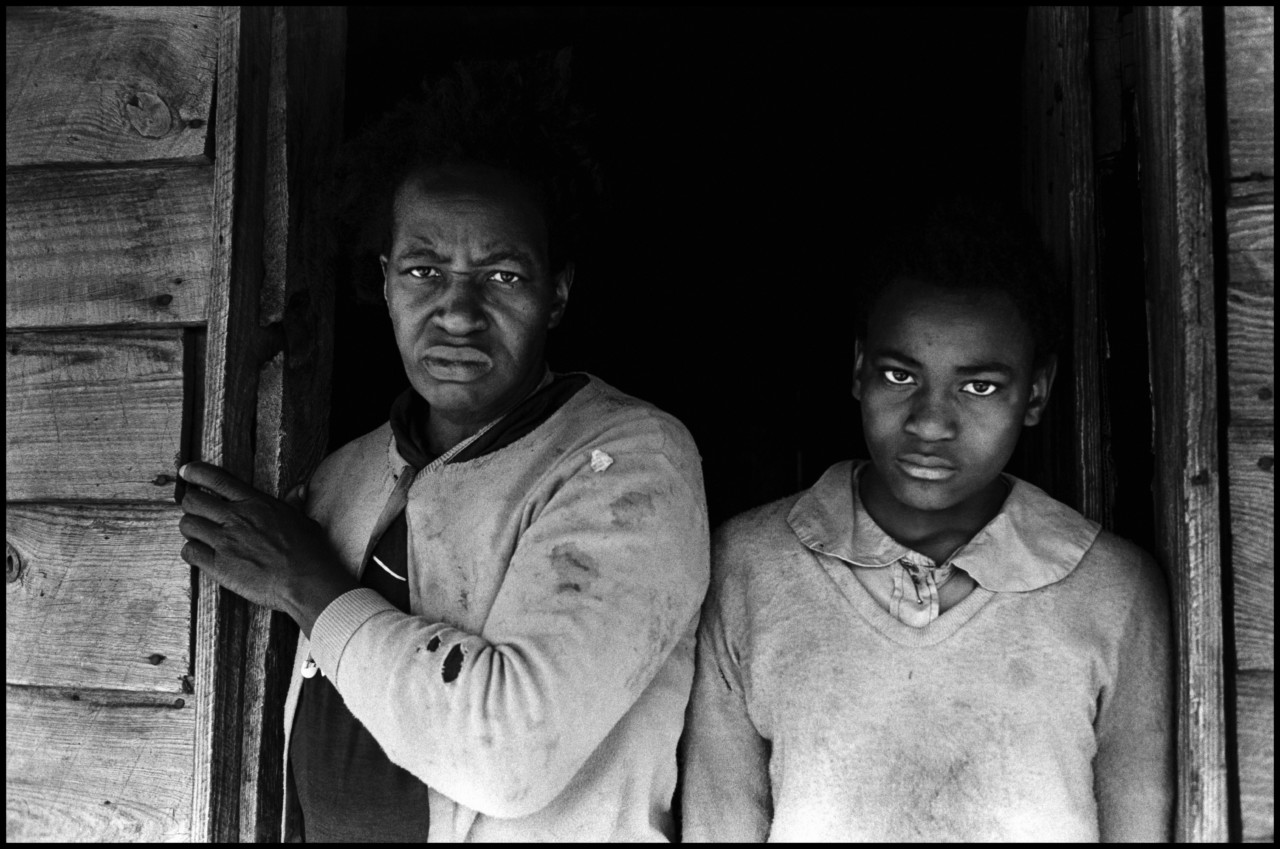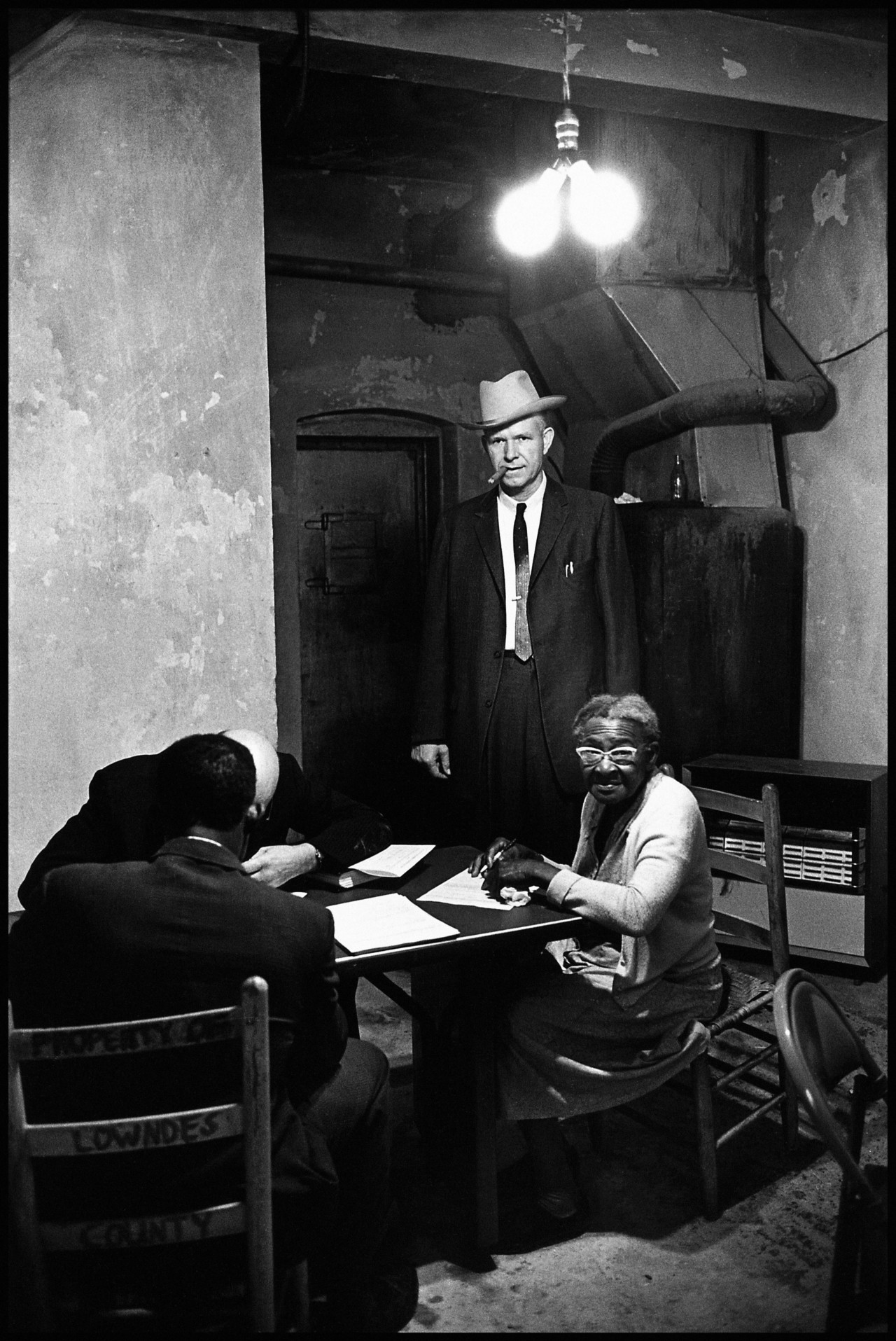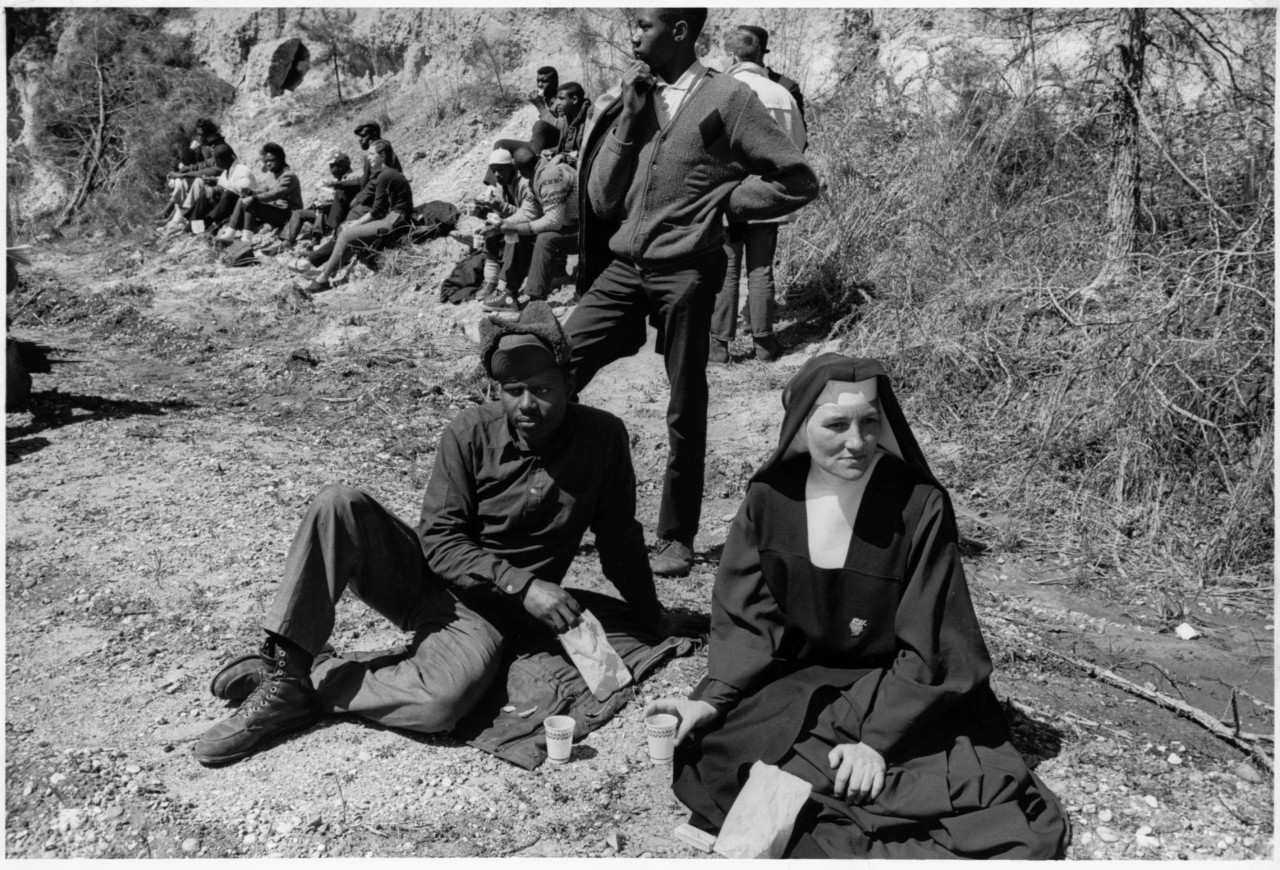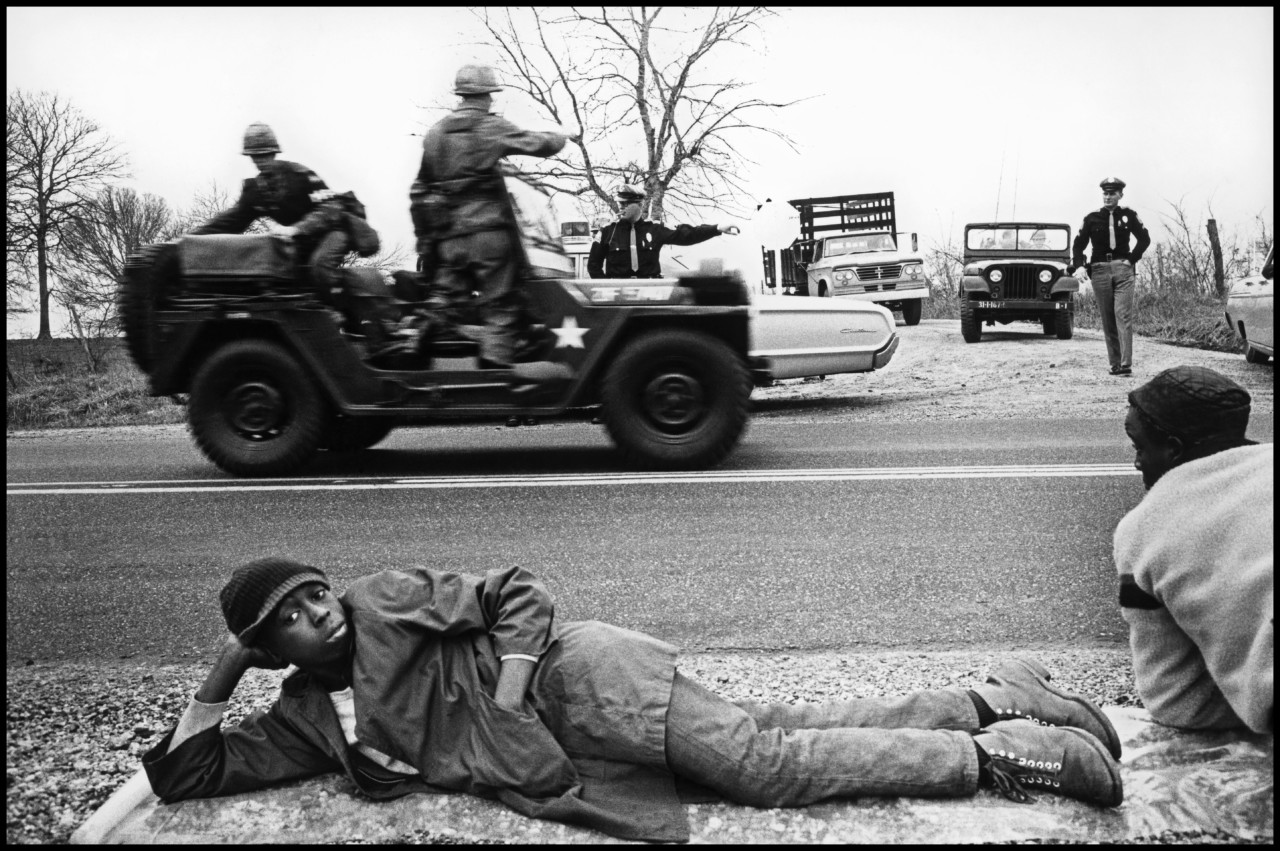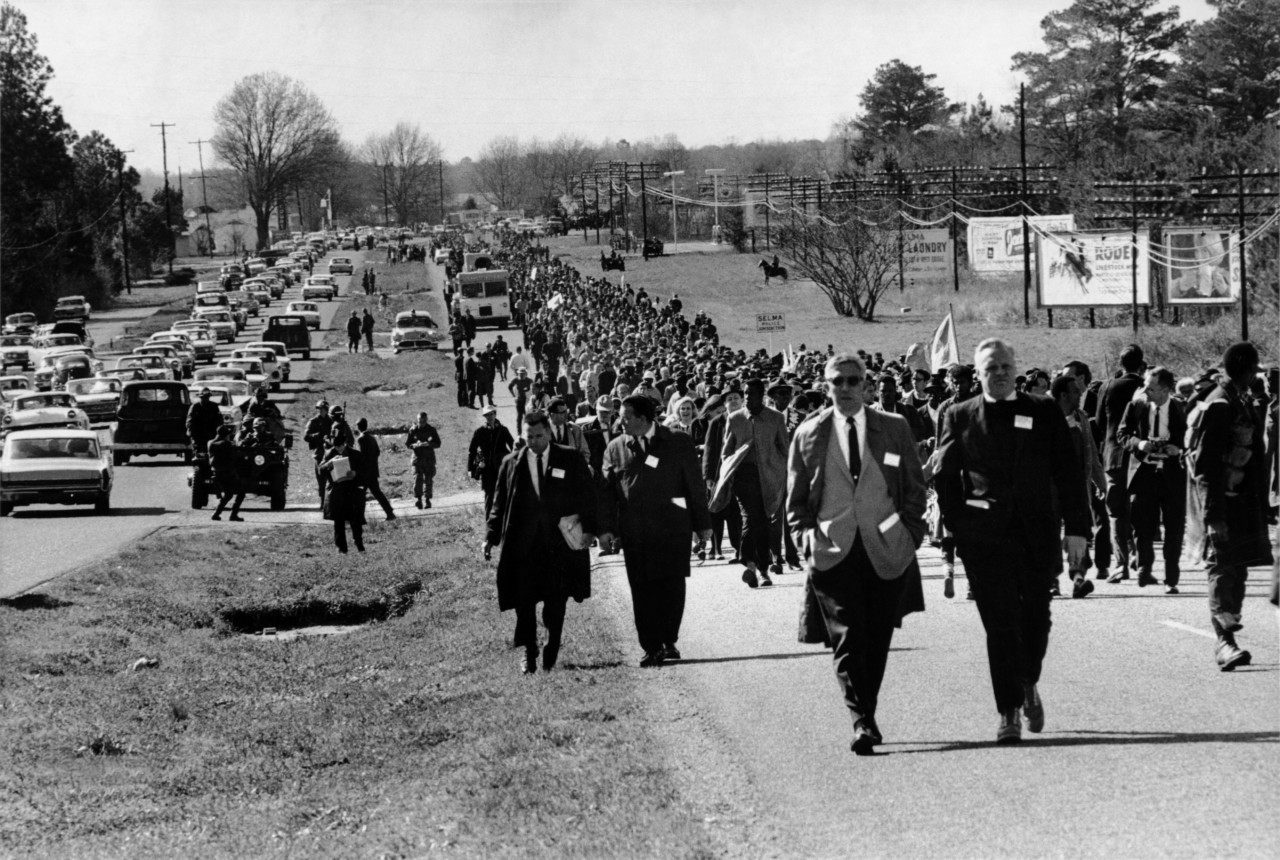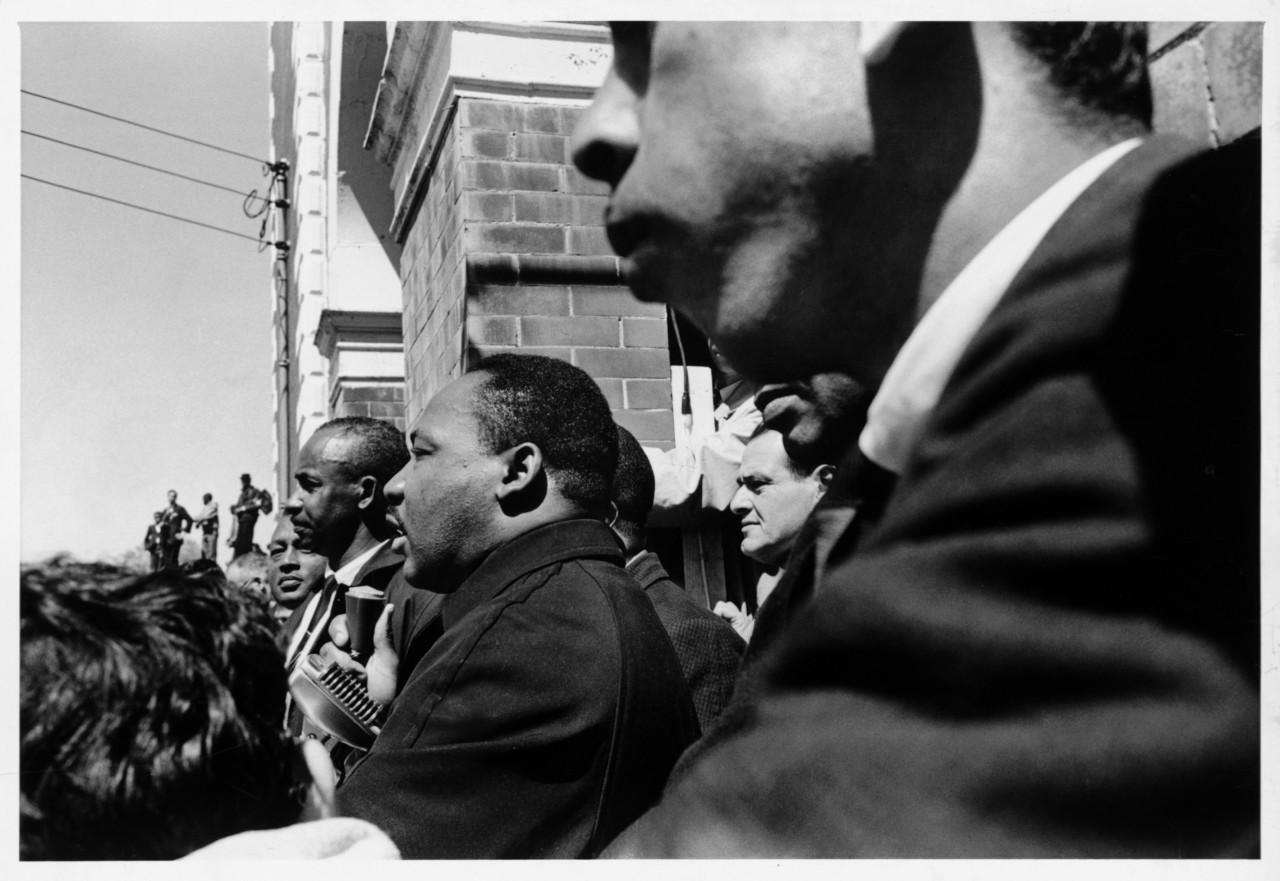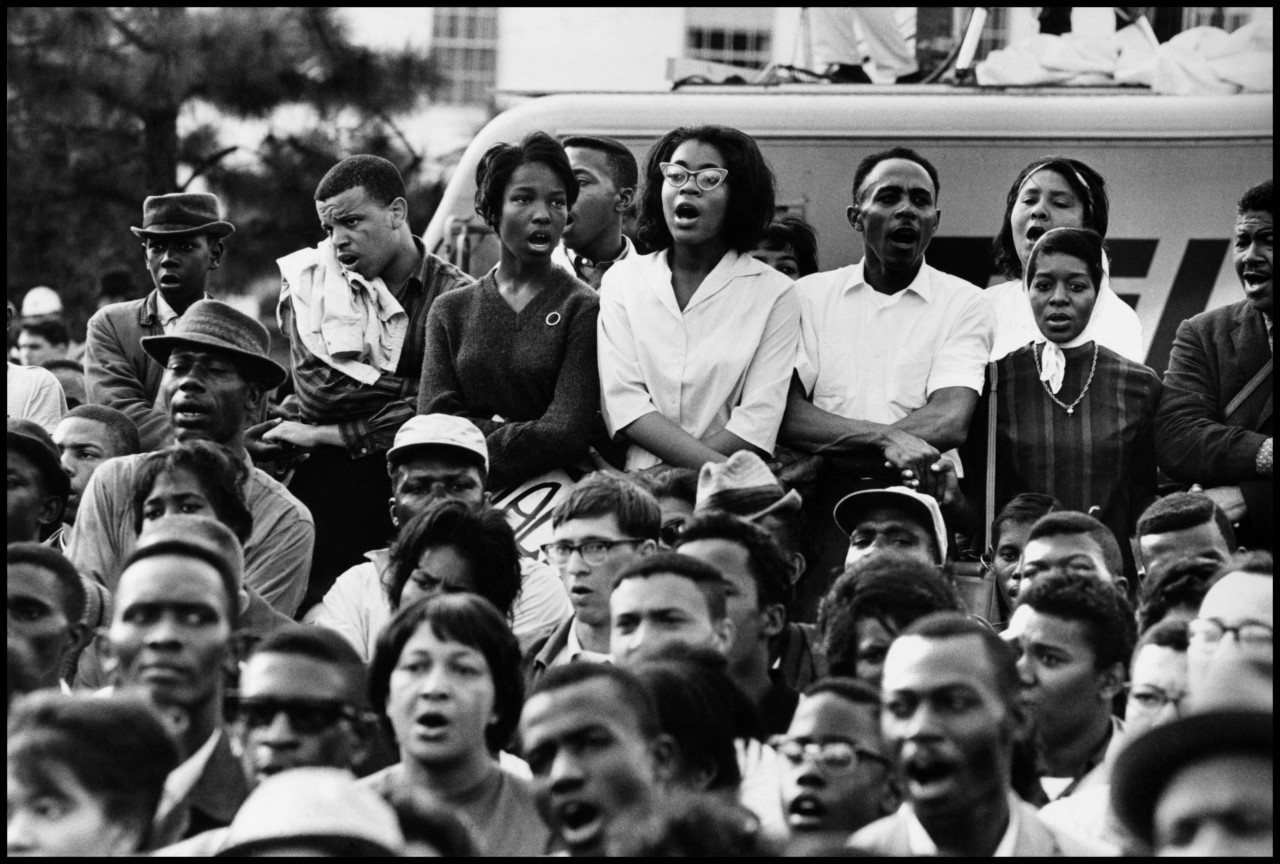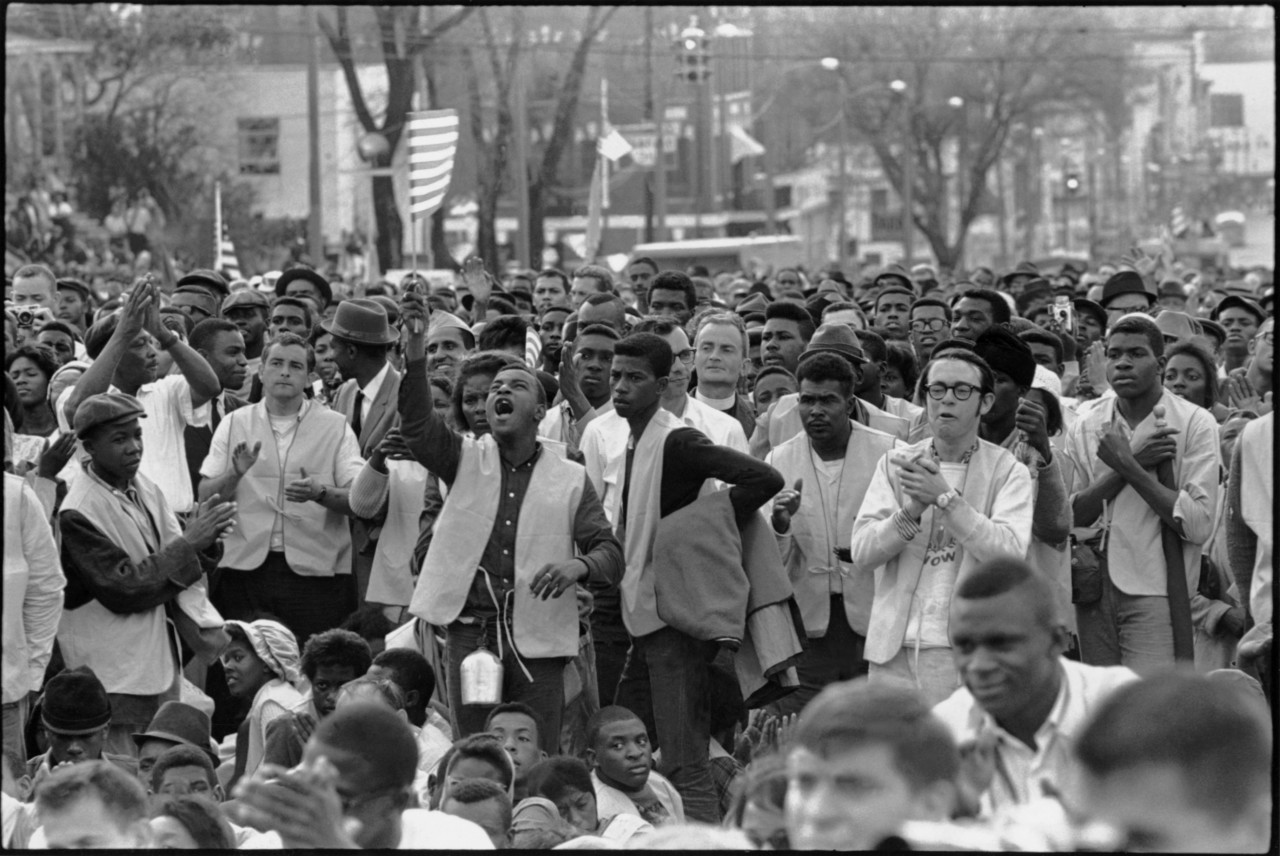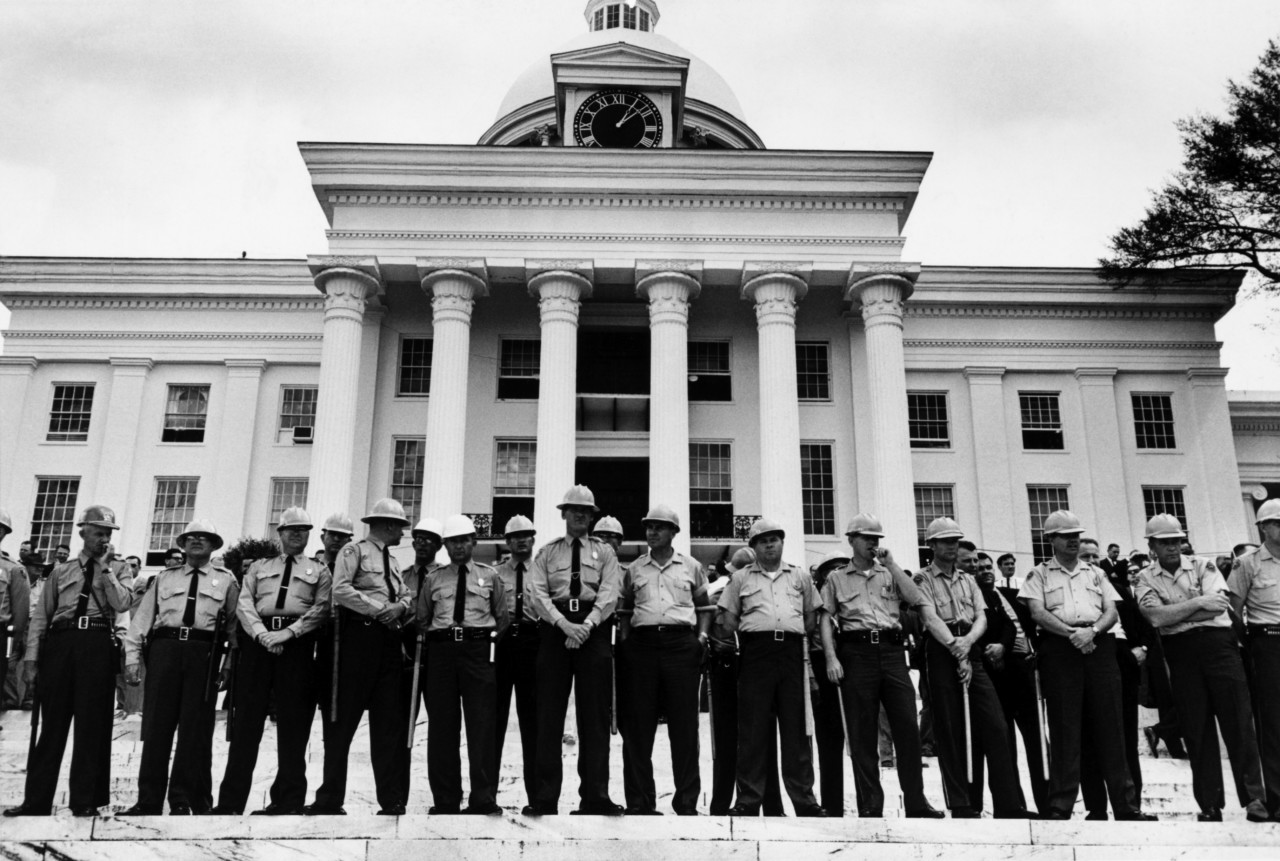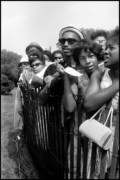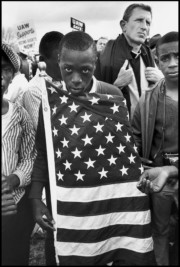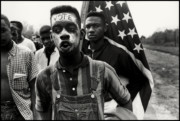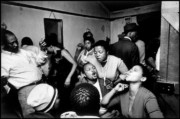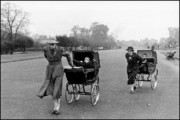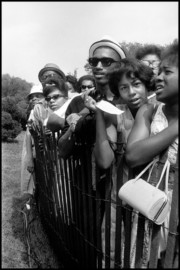Selma
Bruce Davidson's lasting documentation of the historic Selma Marches, a seminal turning point in the American Civil Rights movement
On March 22, 1965, 300 Civil Rights demonstrators began a march from Selma, Alabama to the state capitol of Montgomery to confront local institutions which obstructed African Americans from registering to vote. Three days later, their number had swelled to more than 25,000 as they gathered at the state capitol building to listen to a speech given by Martin Luther King, Jr. and deliver a petition to segregationist Governor George Wallace.
This march was the third attempted in 1965. The first was made on March 7, when state and county police impeded and then attacked demonstrators at Selma’s Edmund Pettus Bridge. Two days later Martin Luther King, Jr. led a ceremonial march across the bridge for a brief prayer session before being given a court order that ended the event. These three marches, including the bloody repression at the Pettus Bridge, were greatly publicized and drew national attention to voter rights in the South.
Appalled at what he’d seen, on March 15, President Lyndon B. Johnson presented a bill to Congress which would become the Voter Rights Act, one of the most effective pieces of Civil Rights legislation ever implemented. In 1960 there were 53,000 registered black voters in Alabama but 10 times that amount in 1990.



